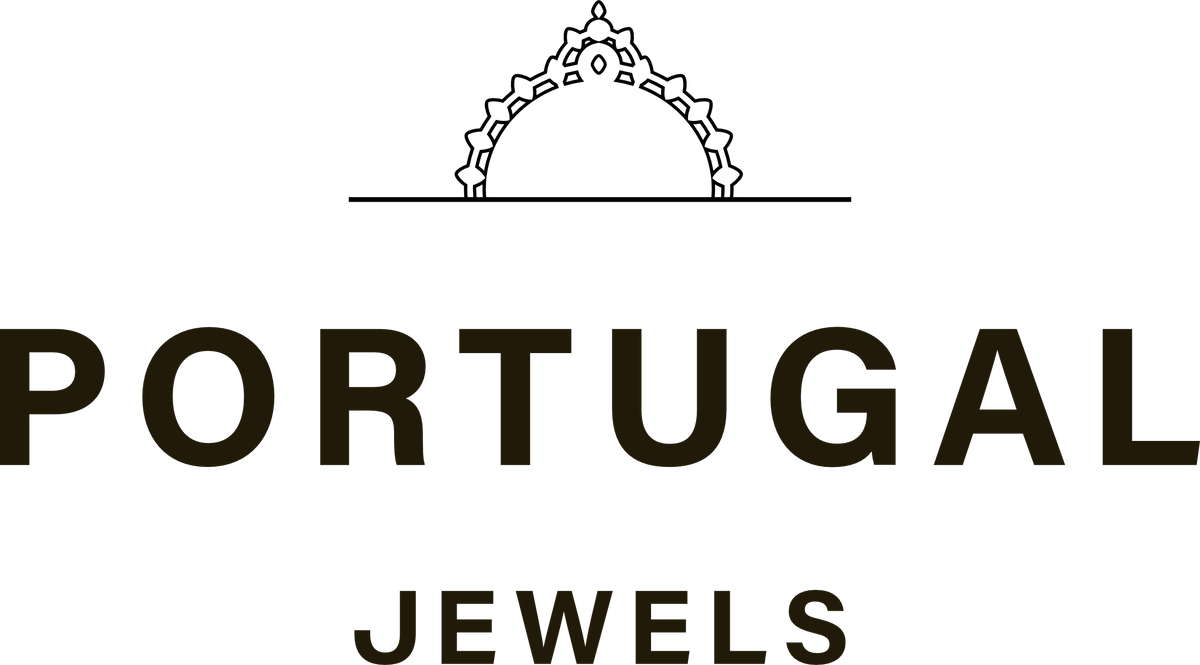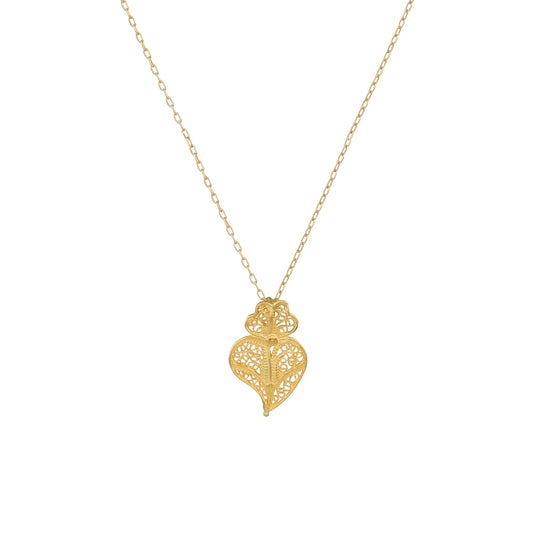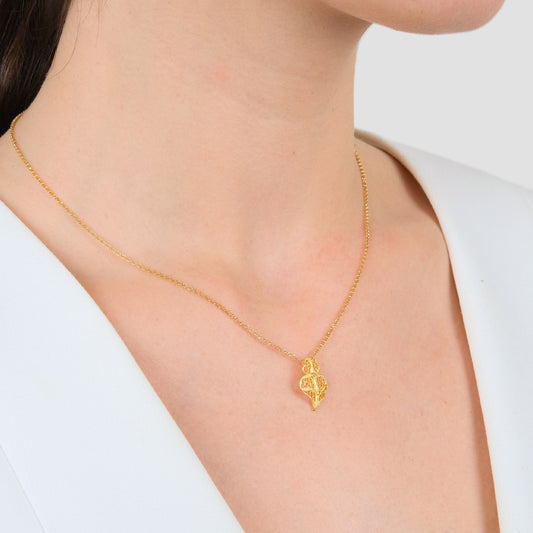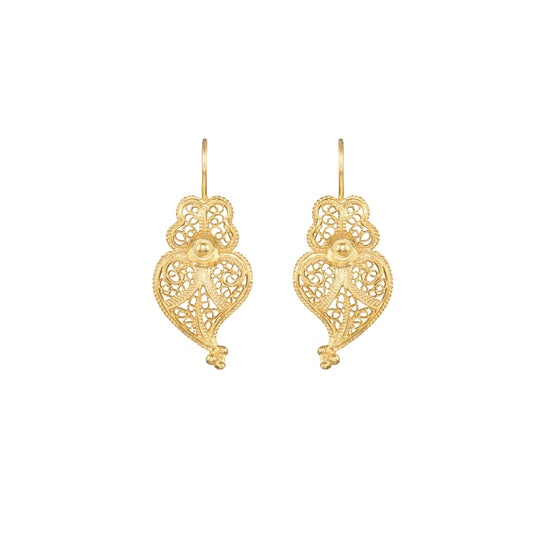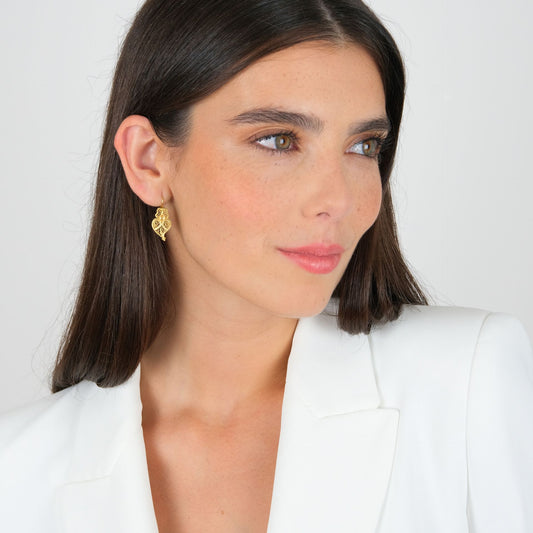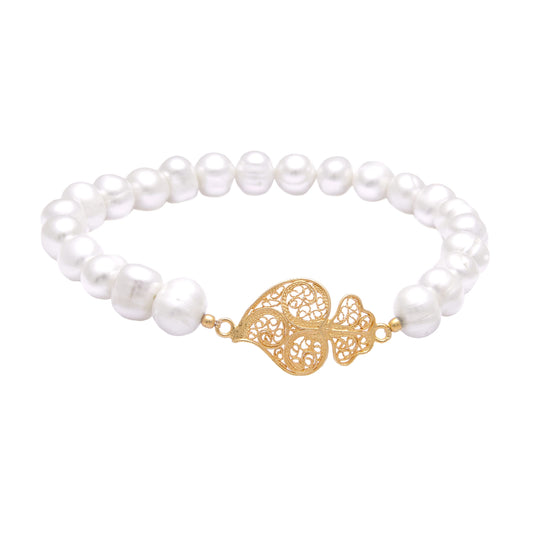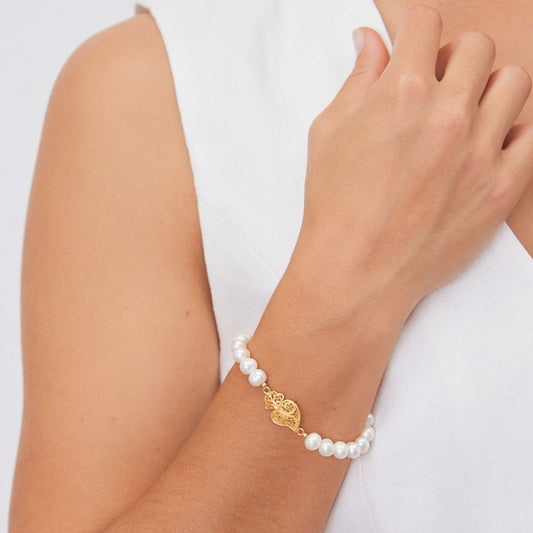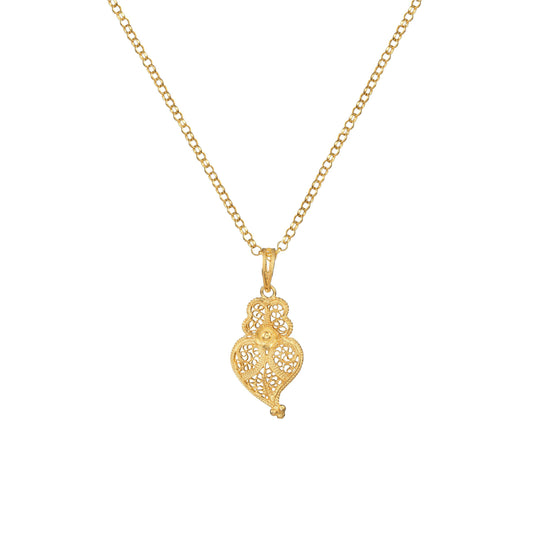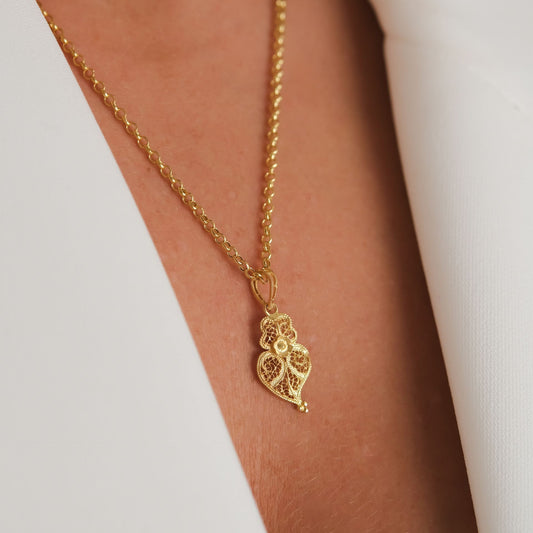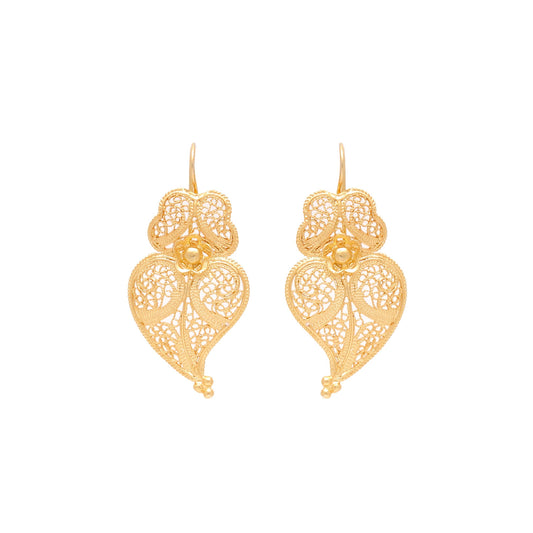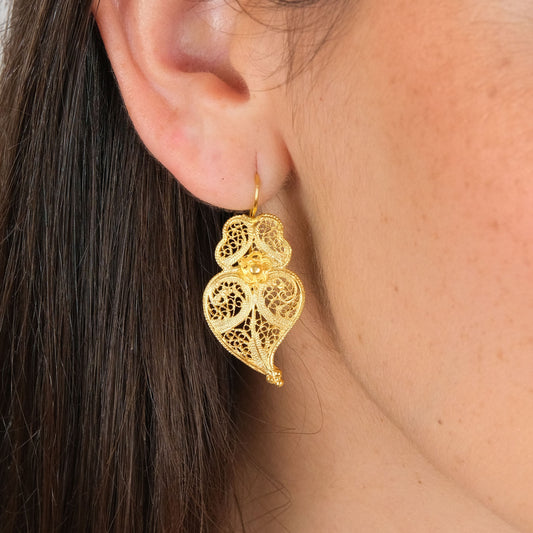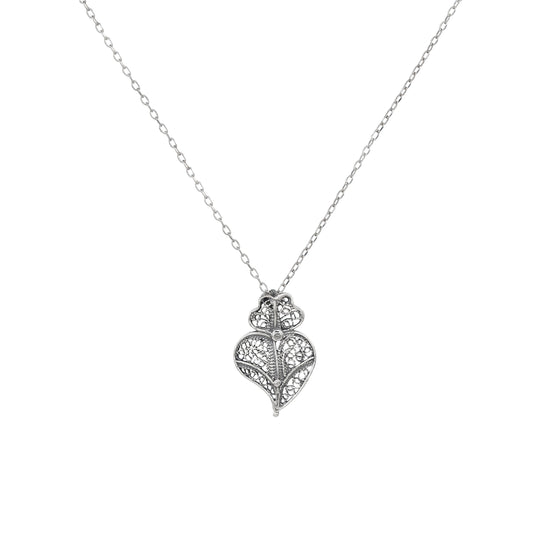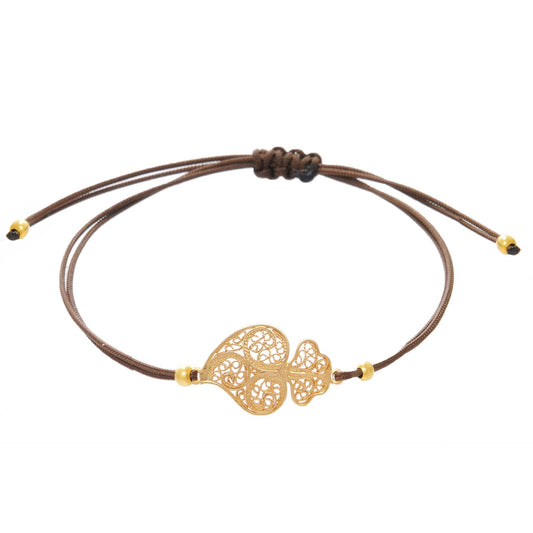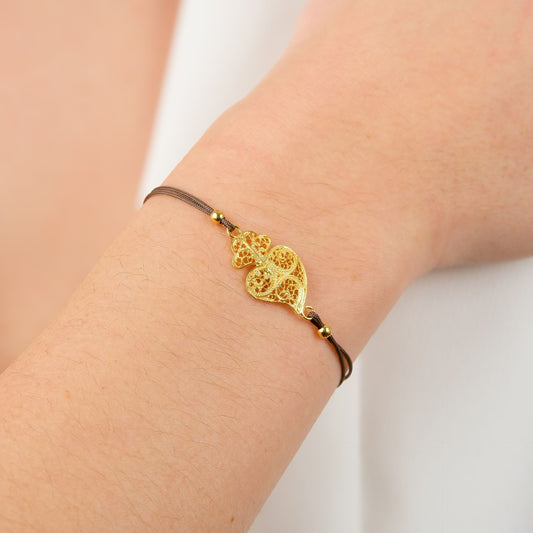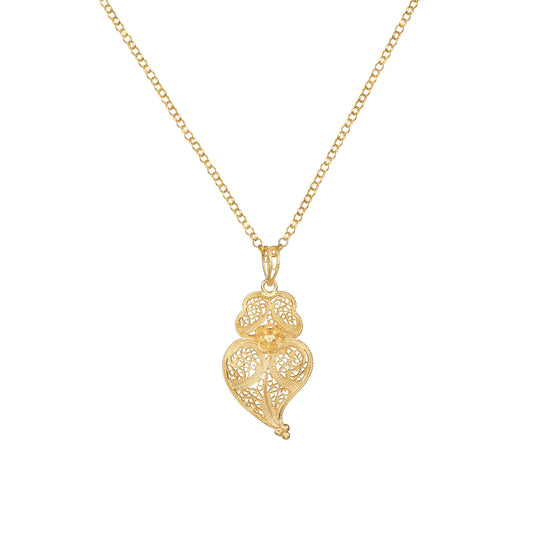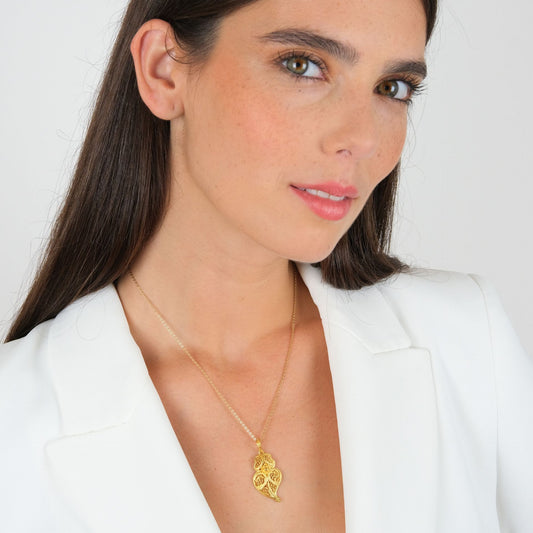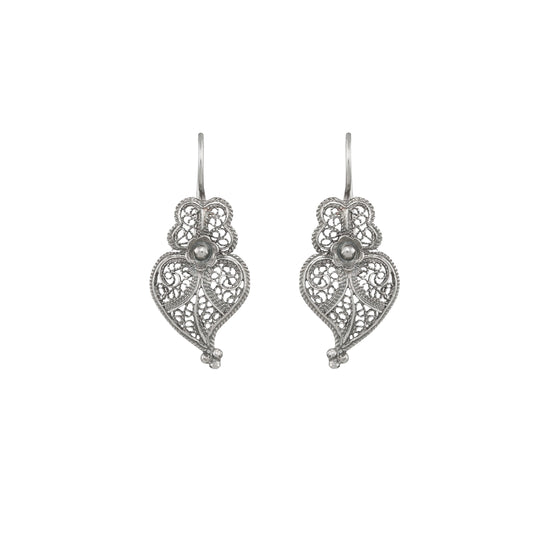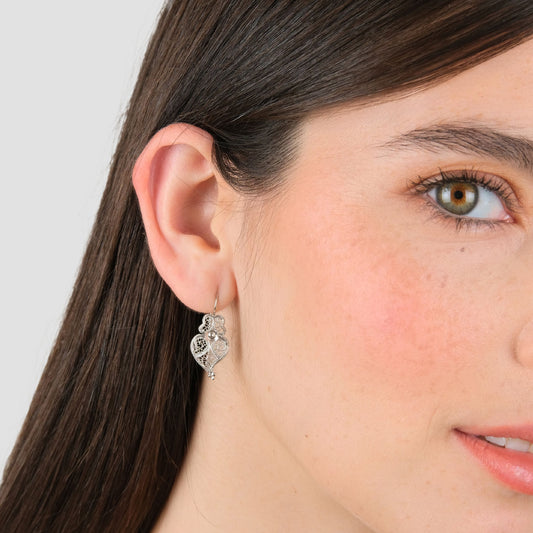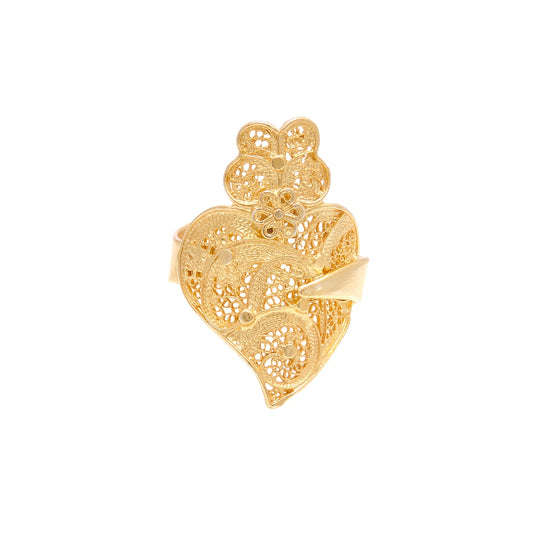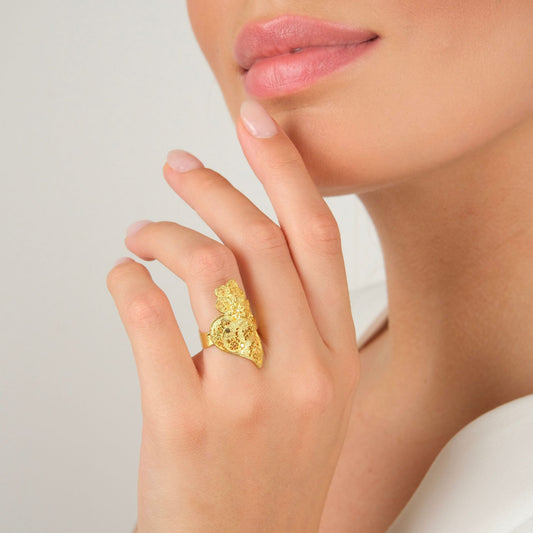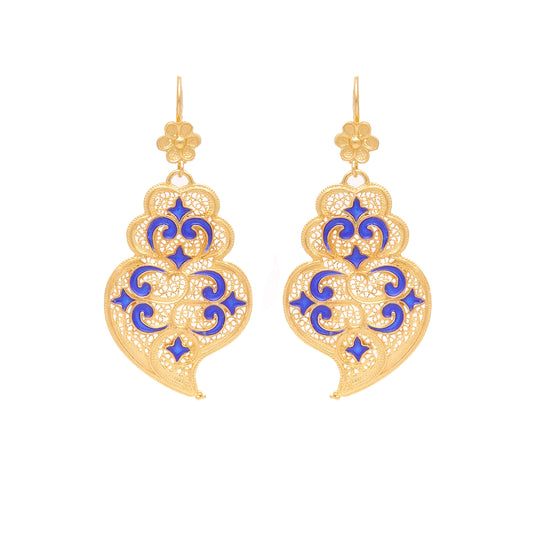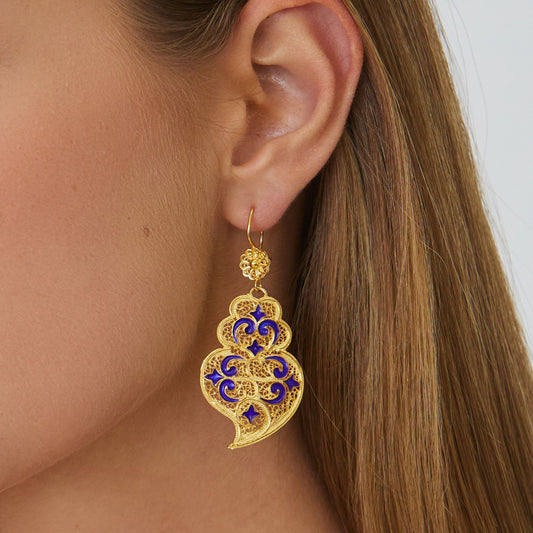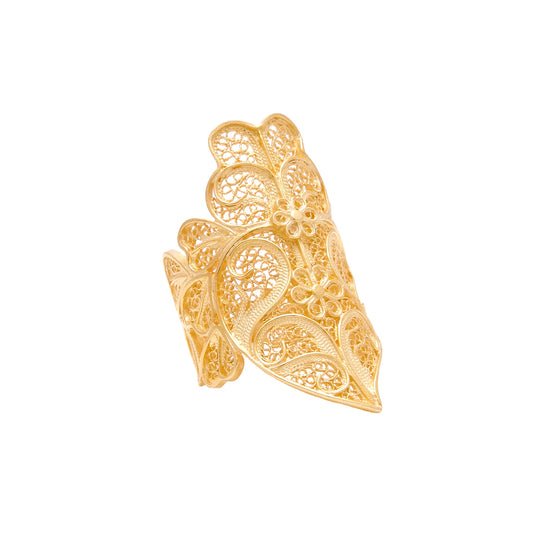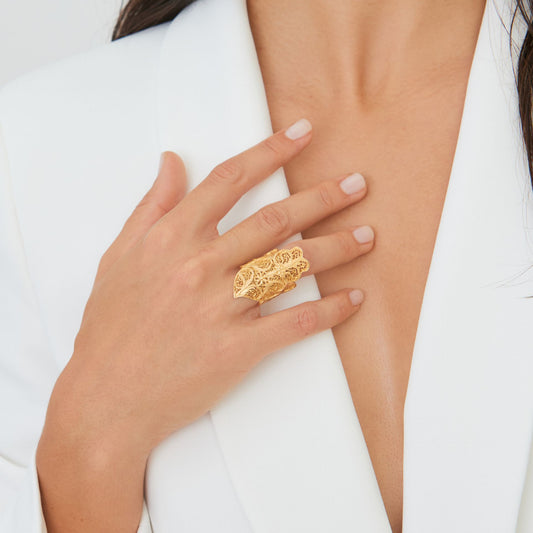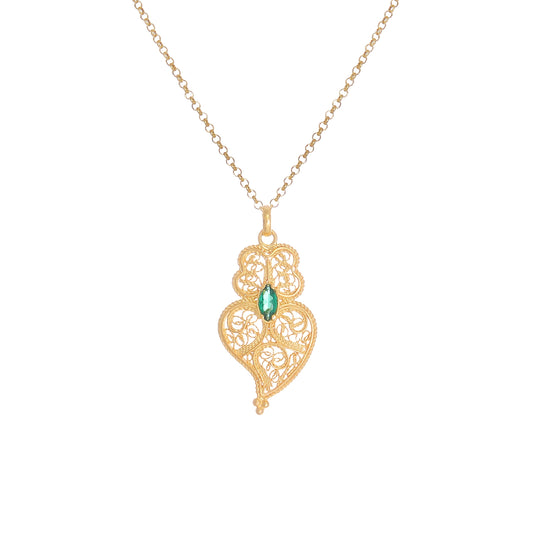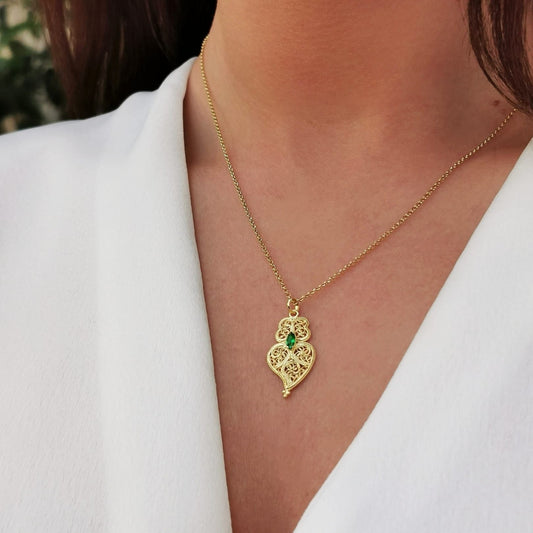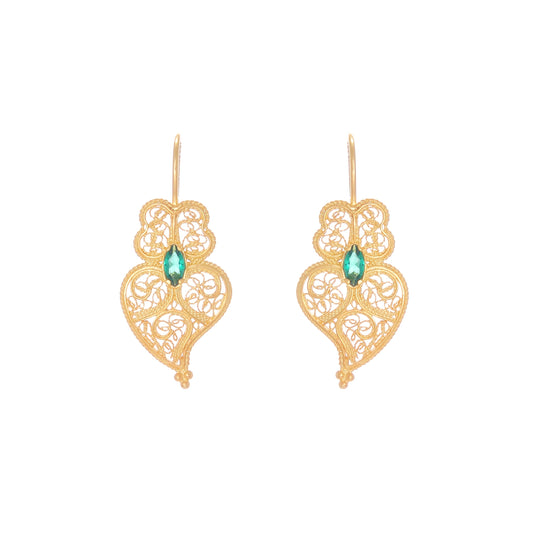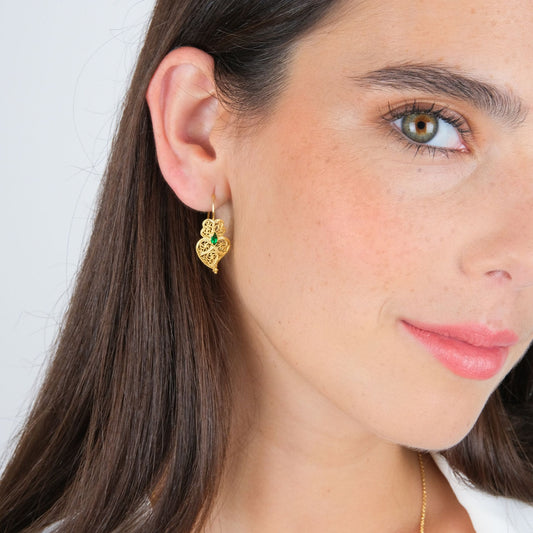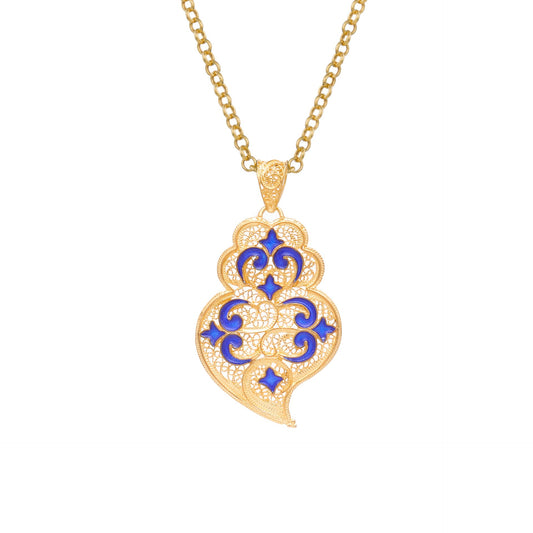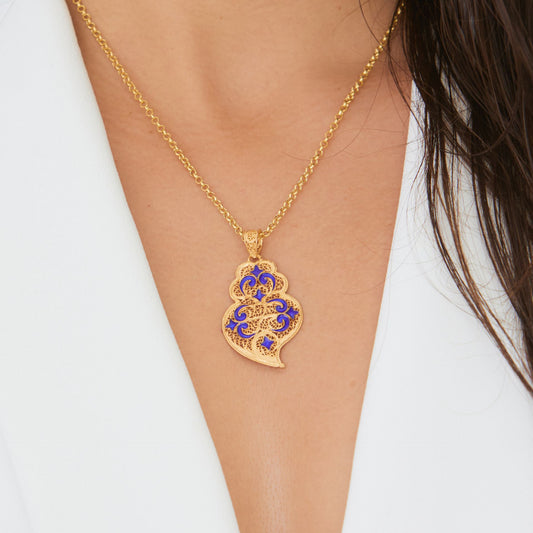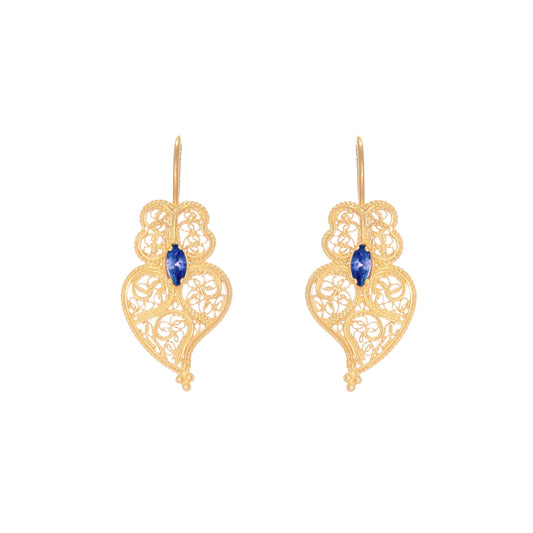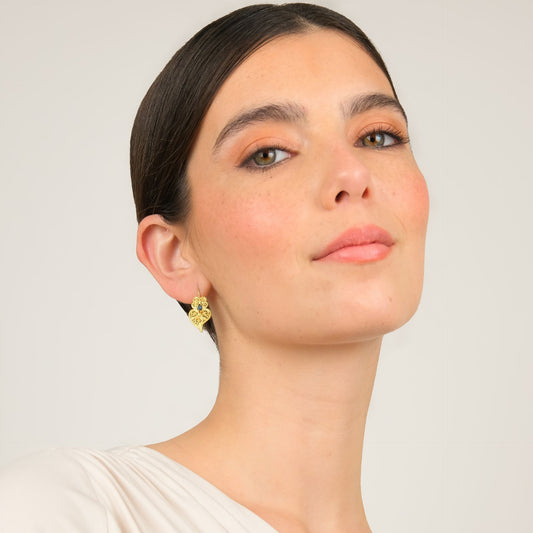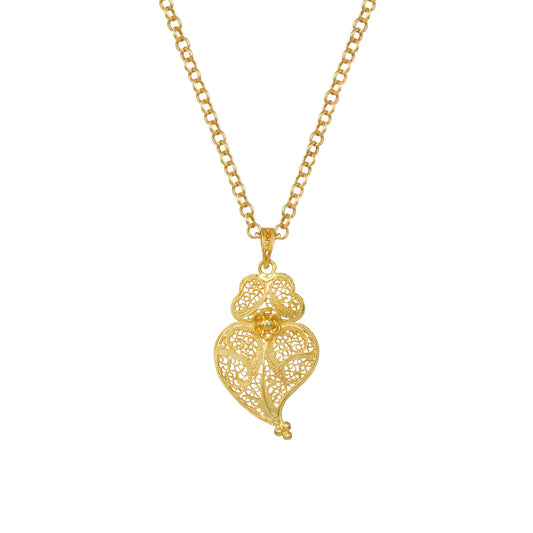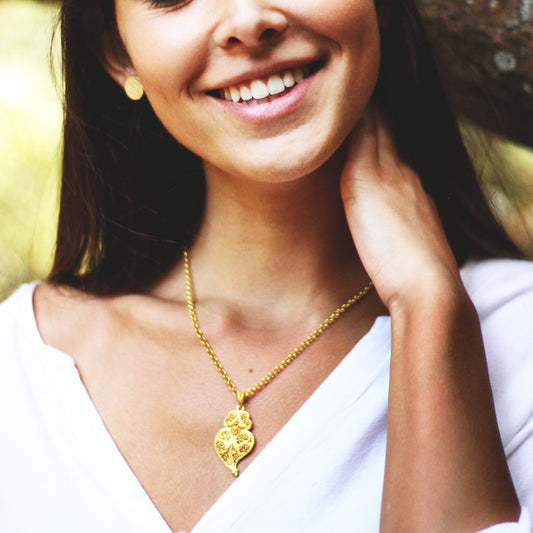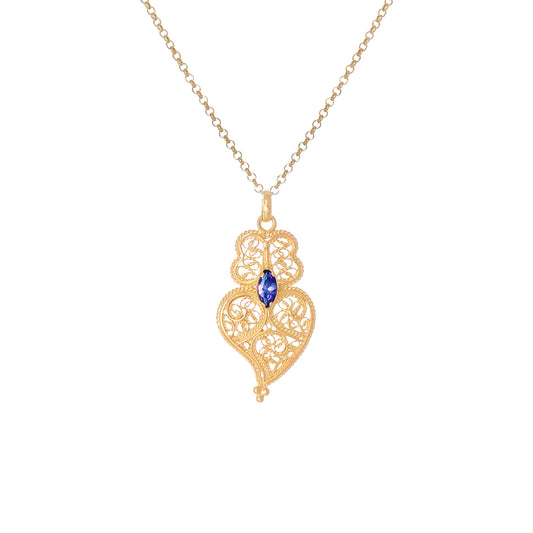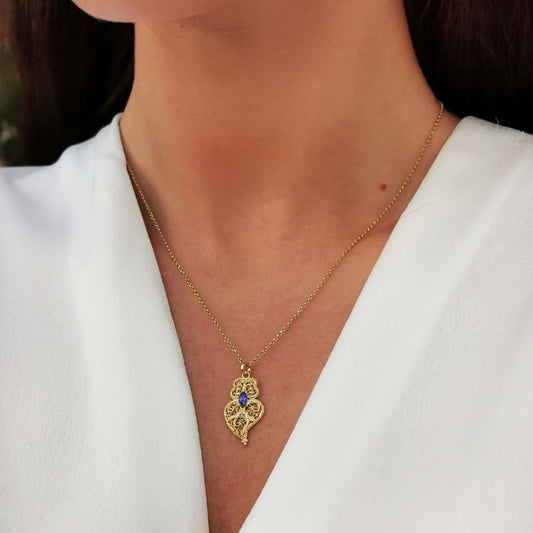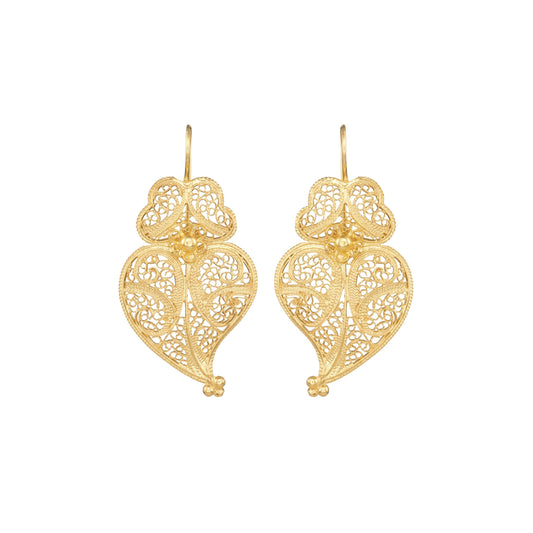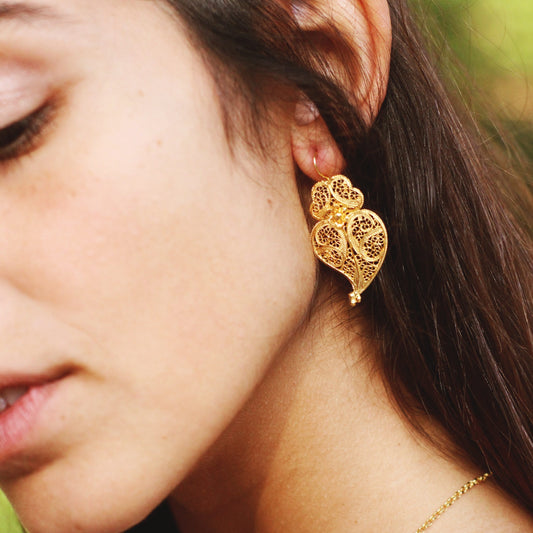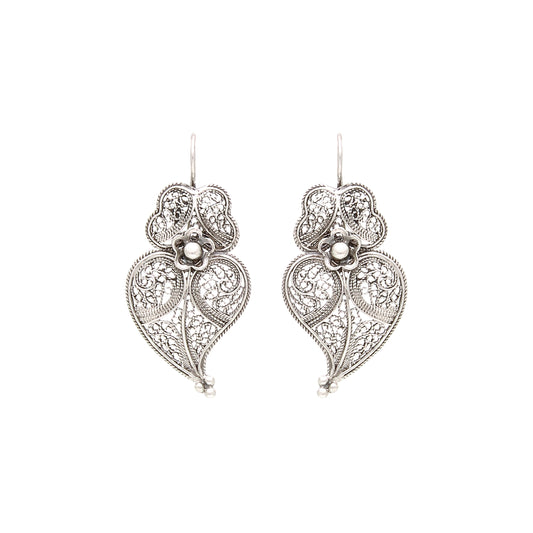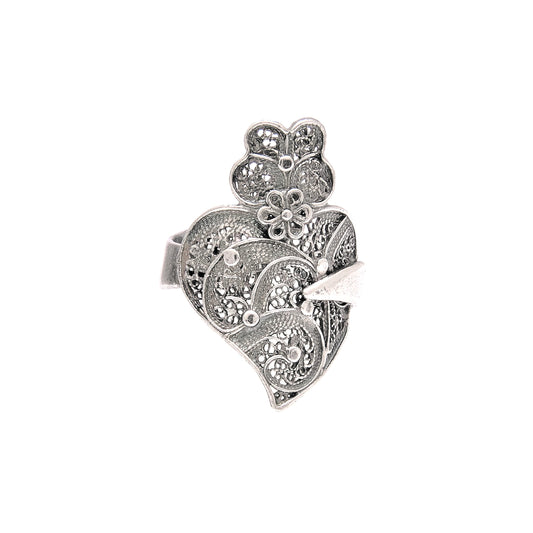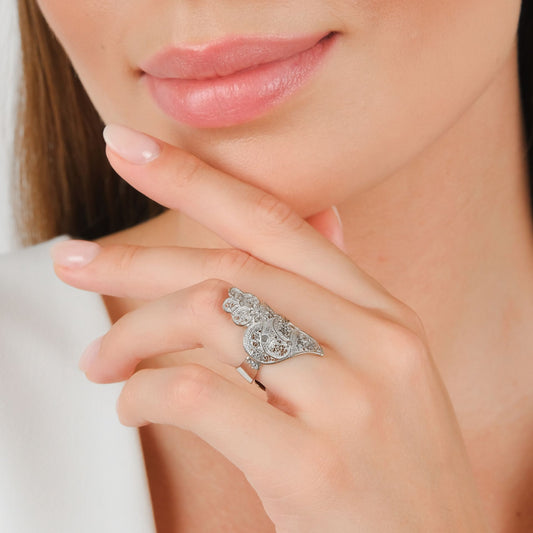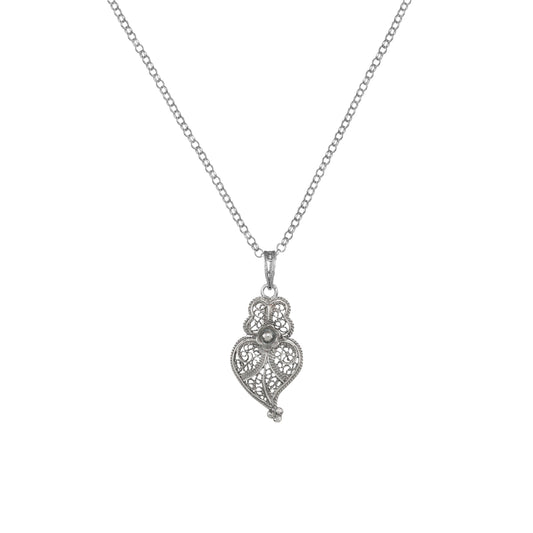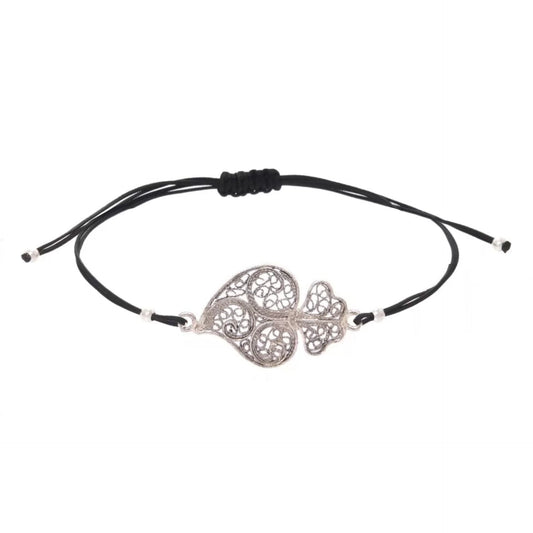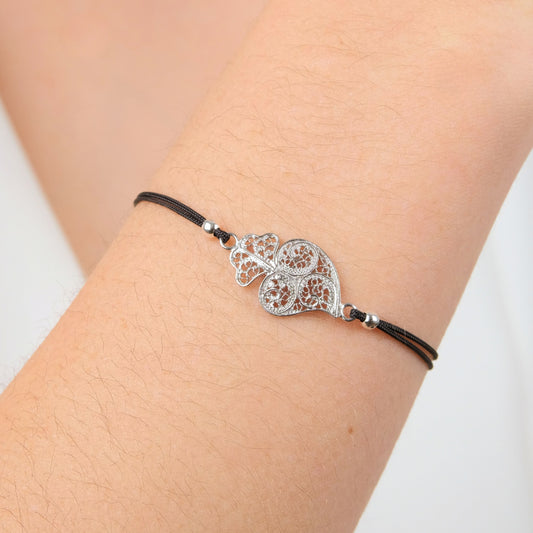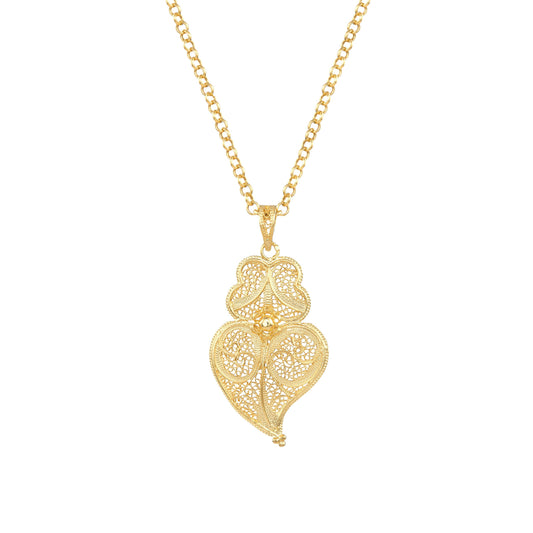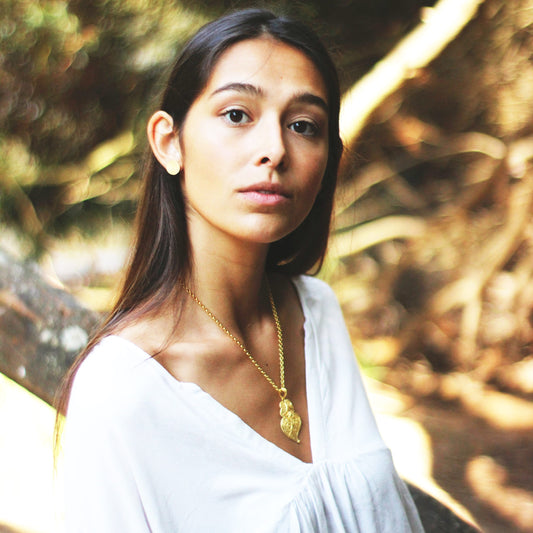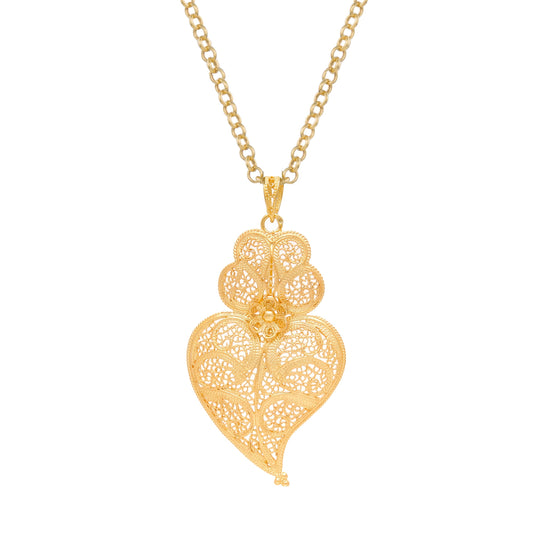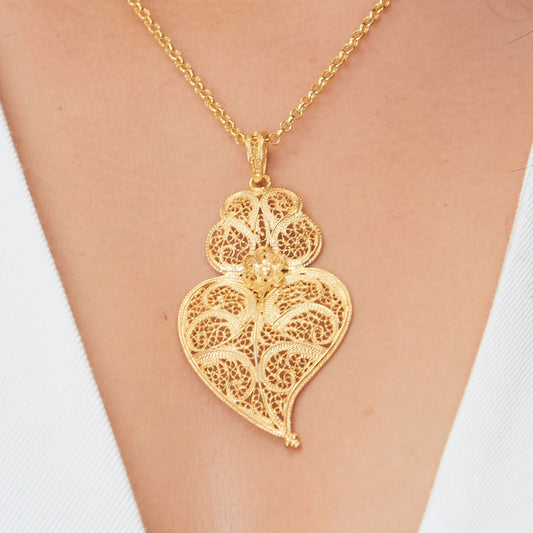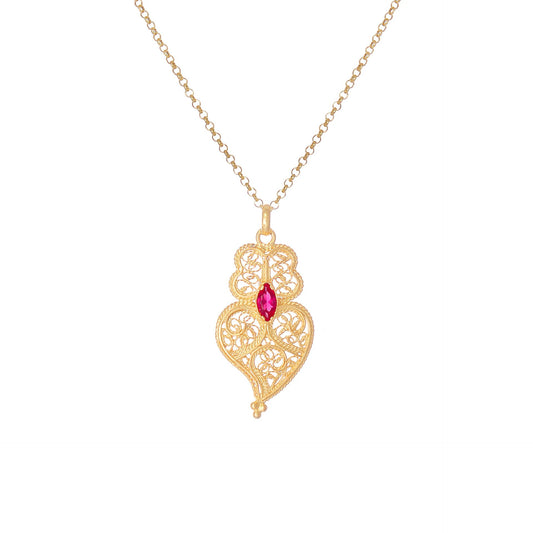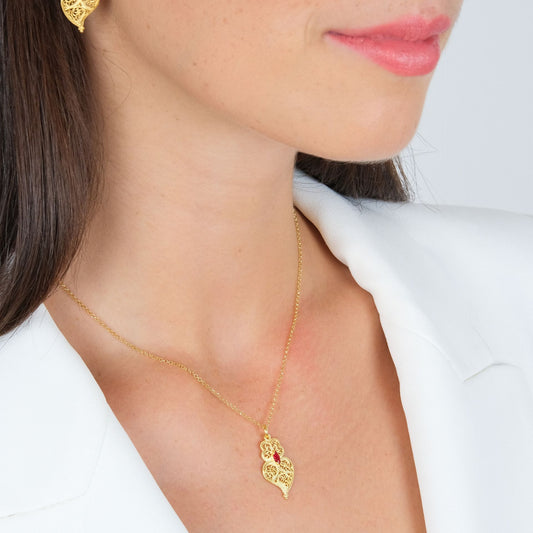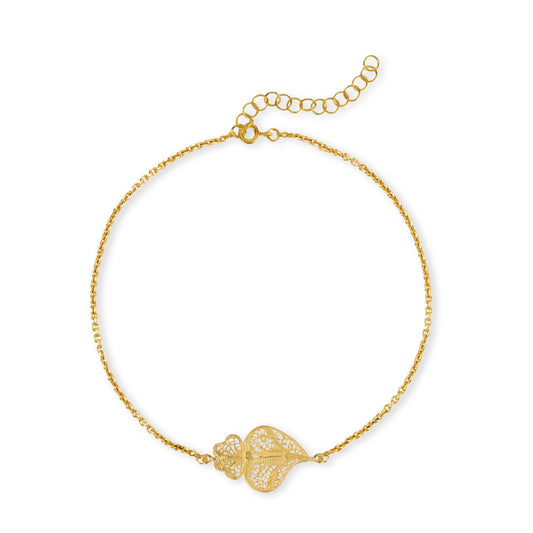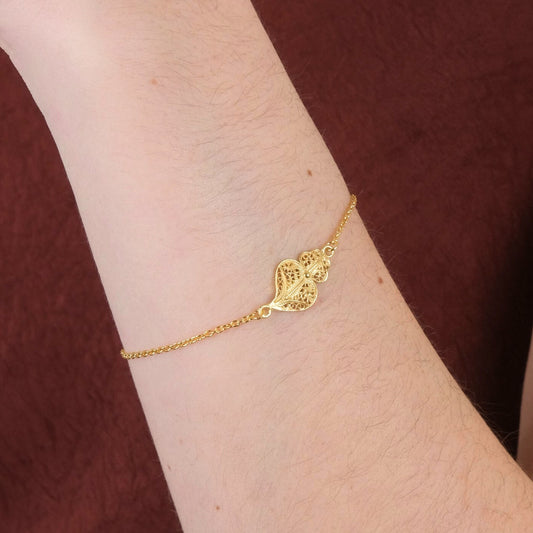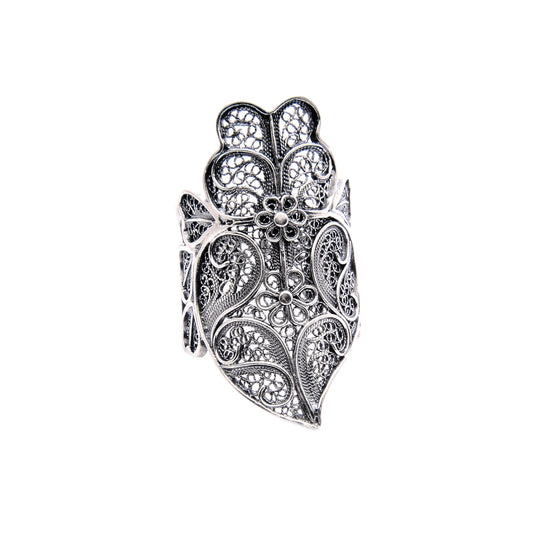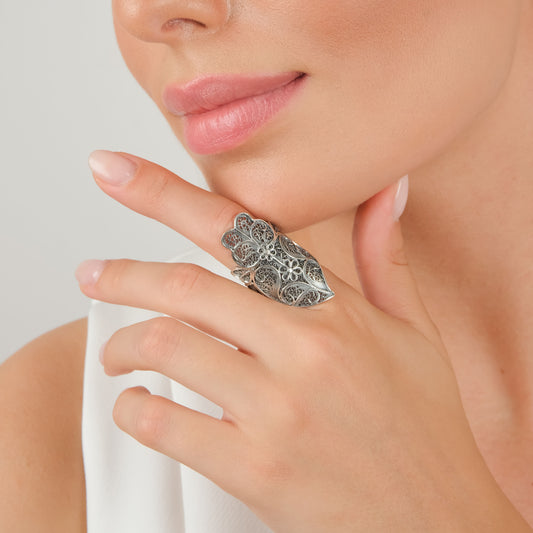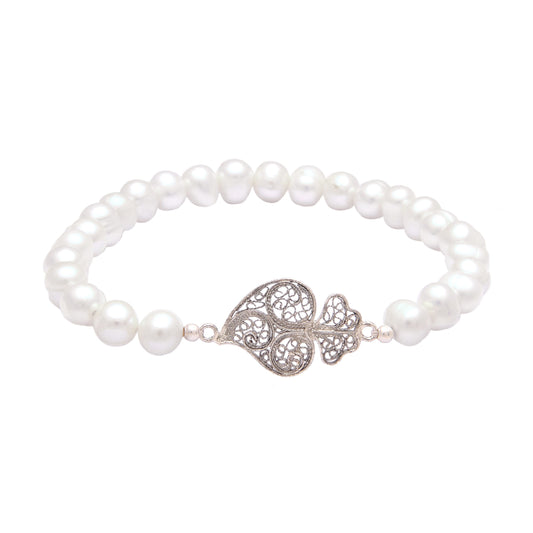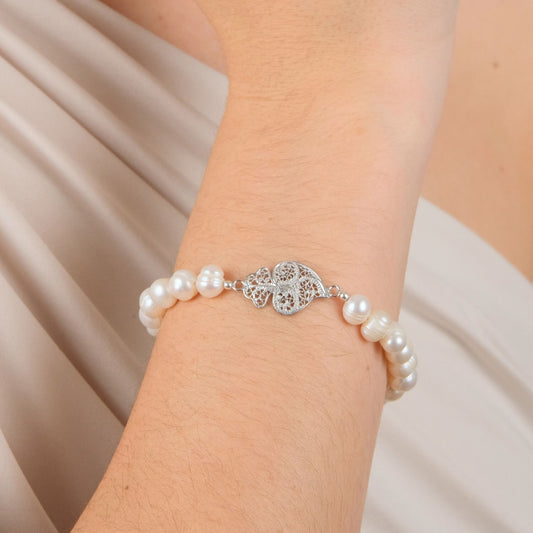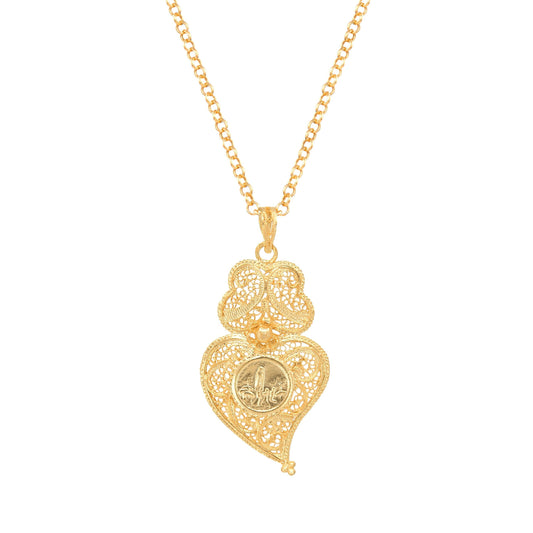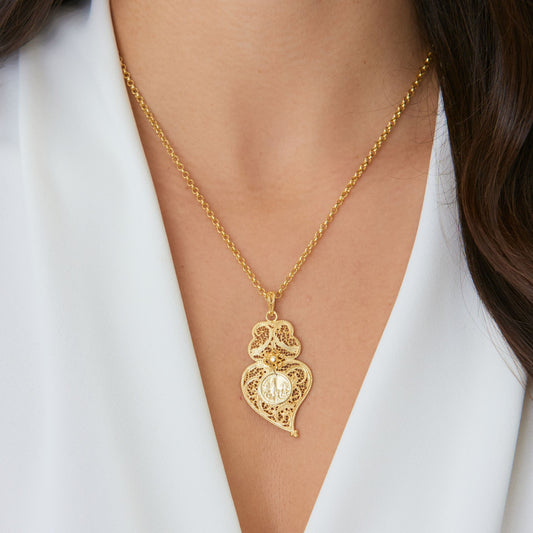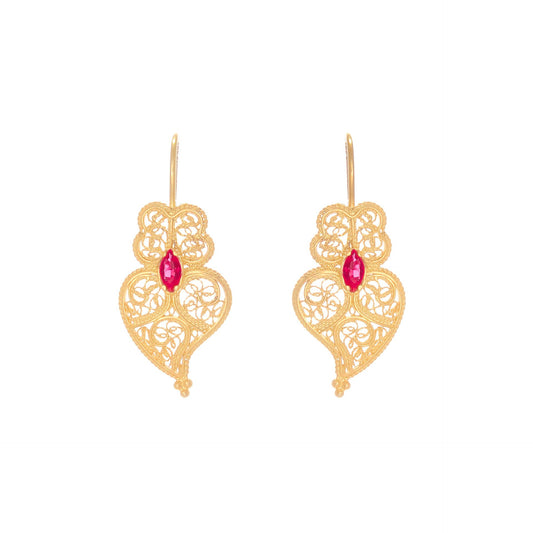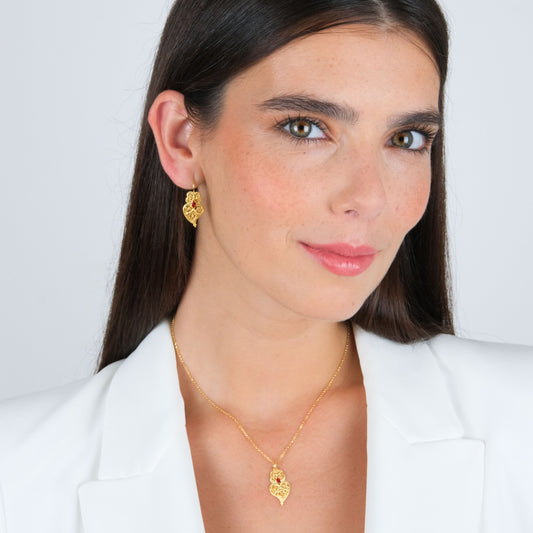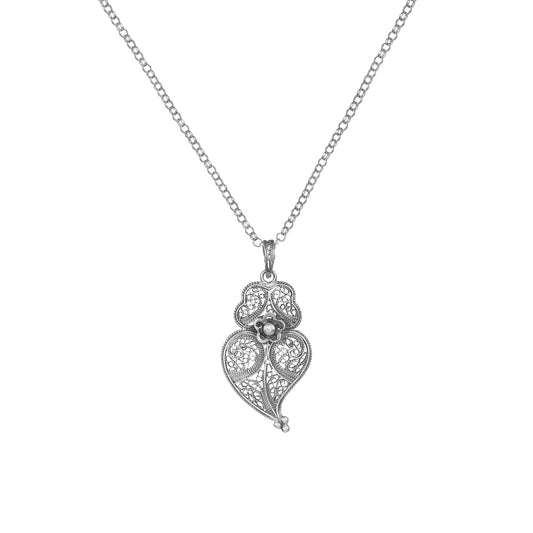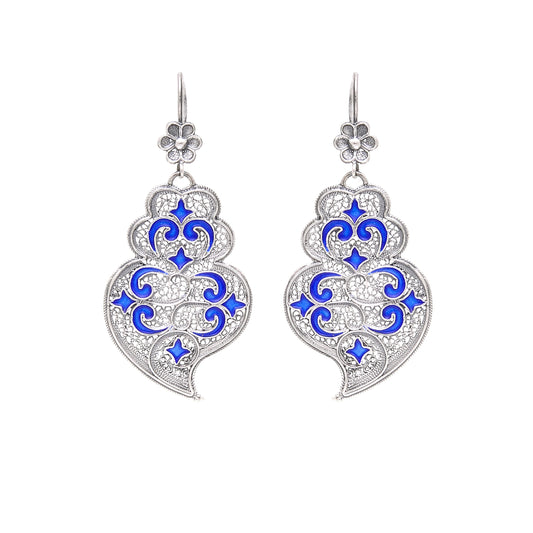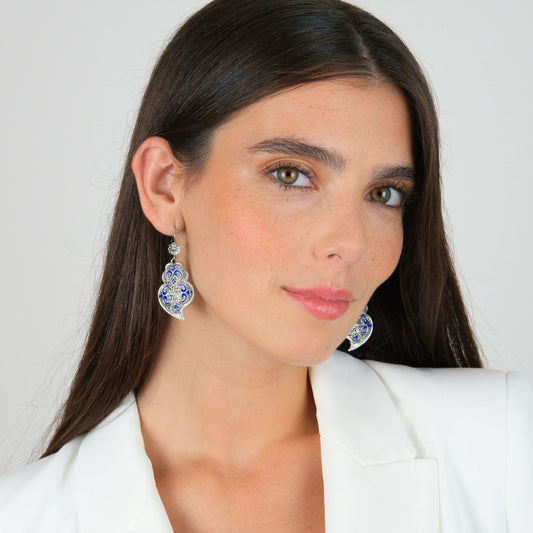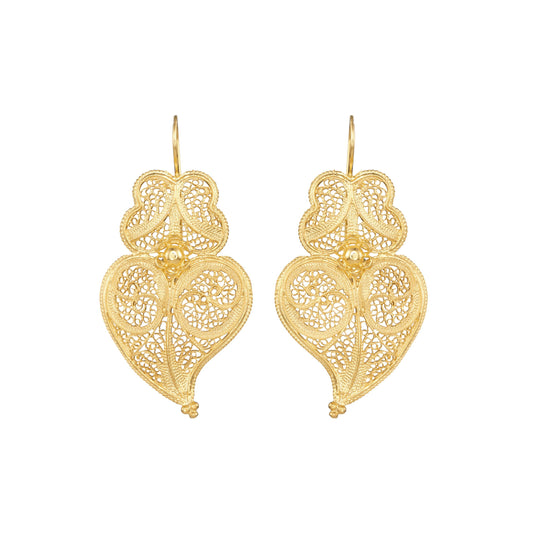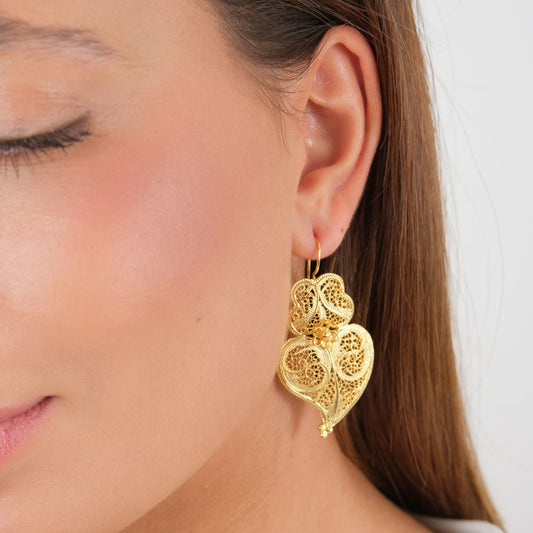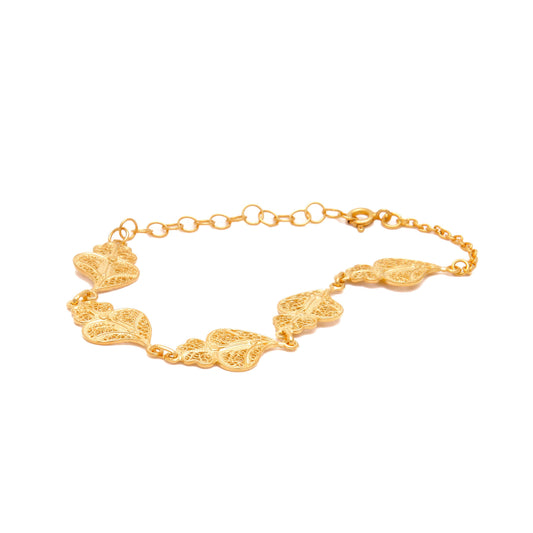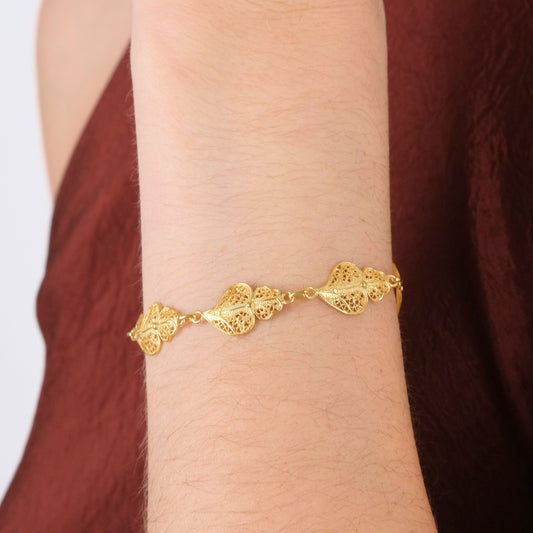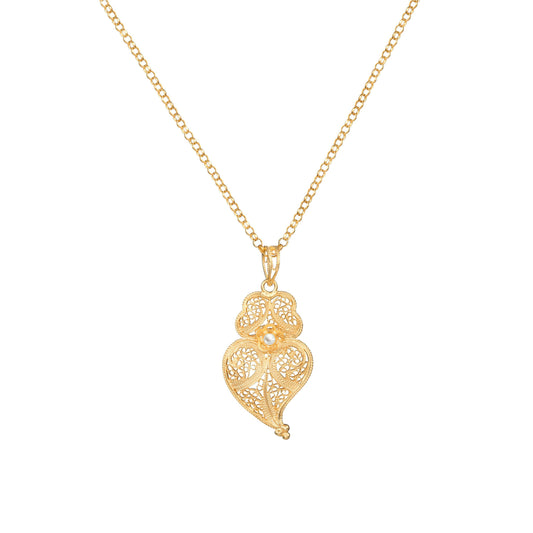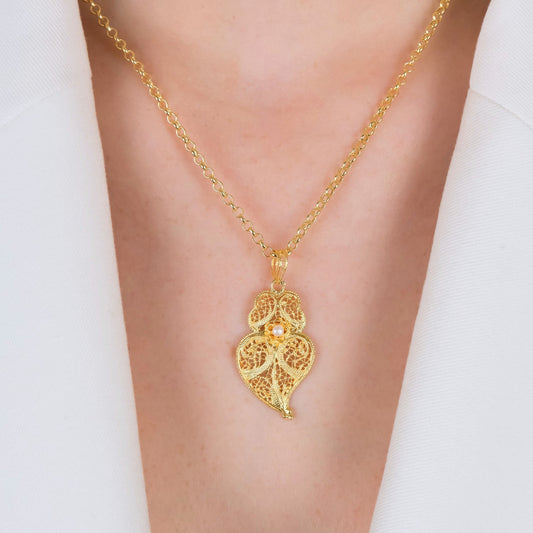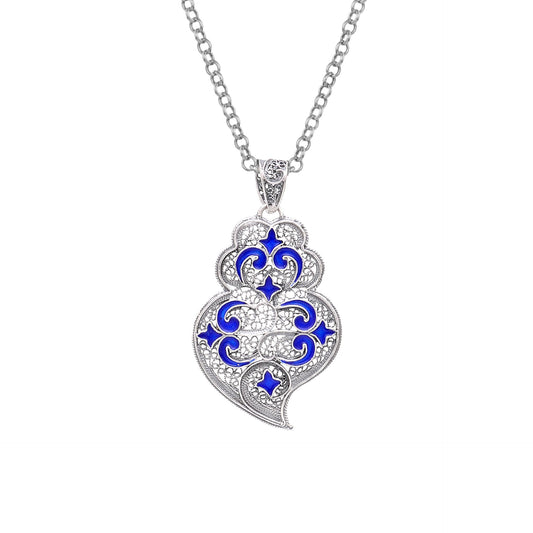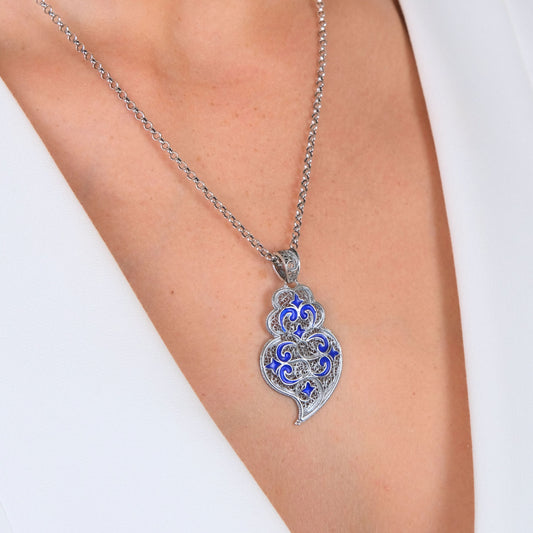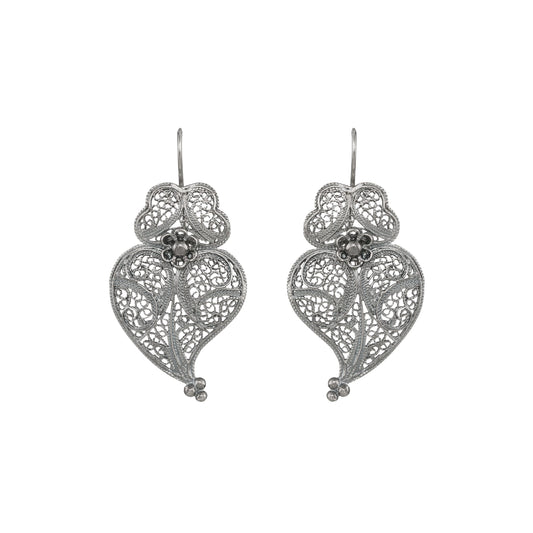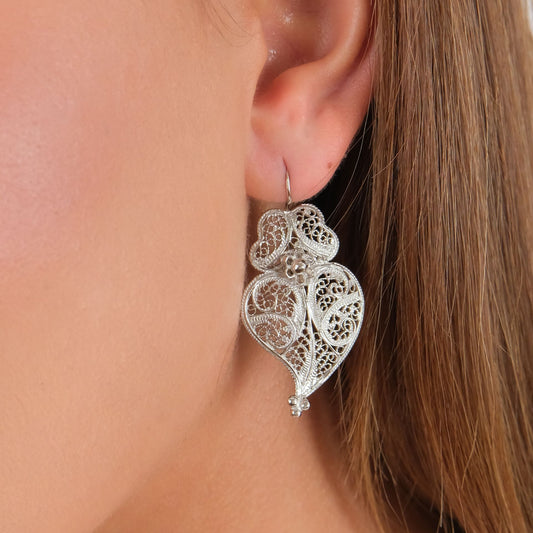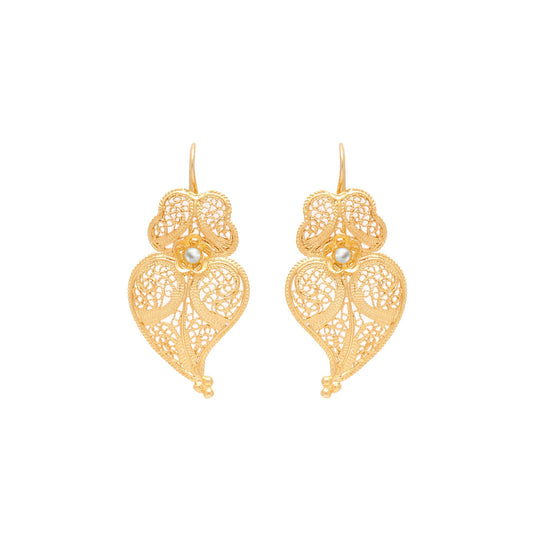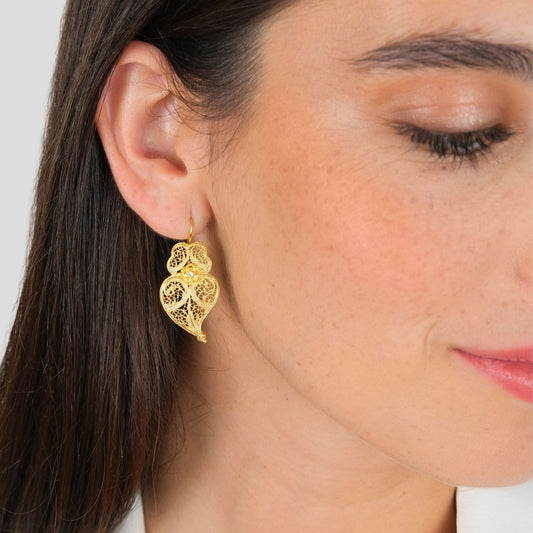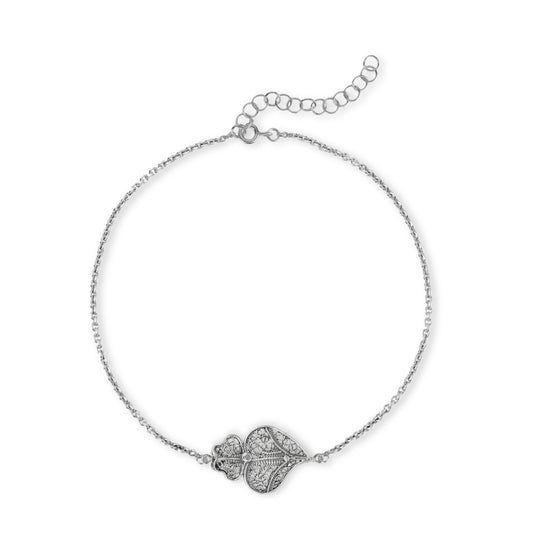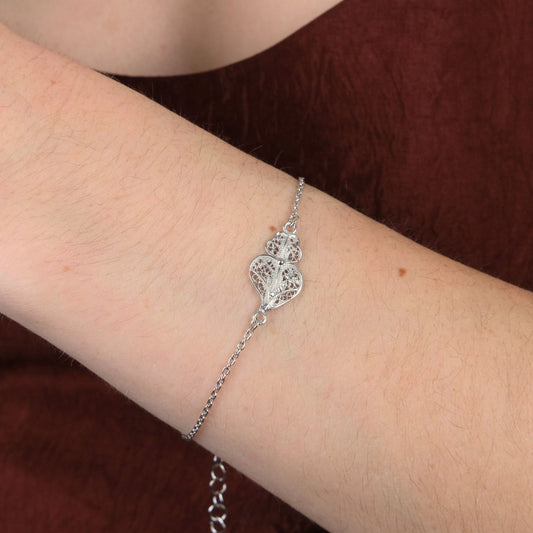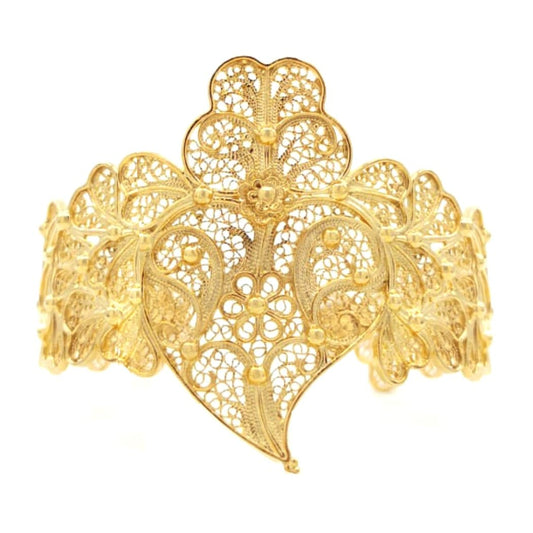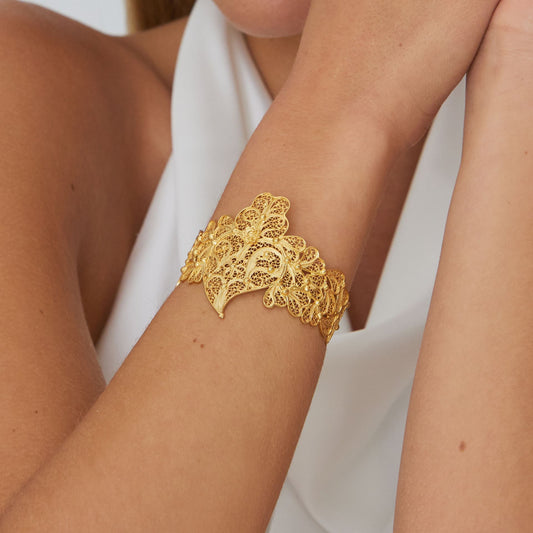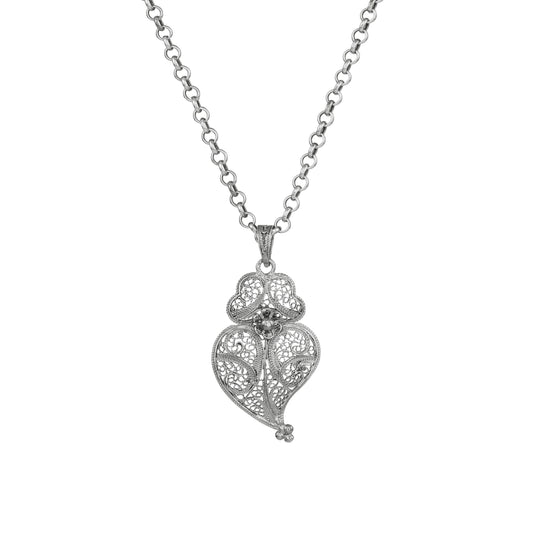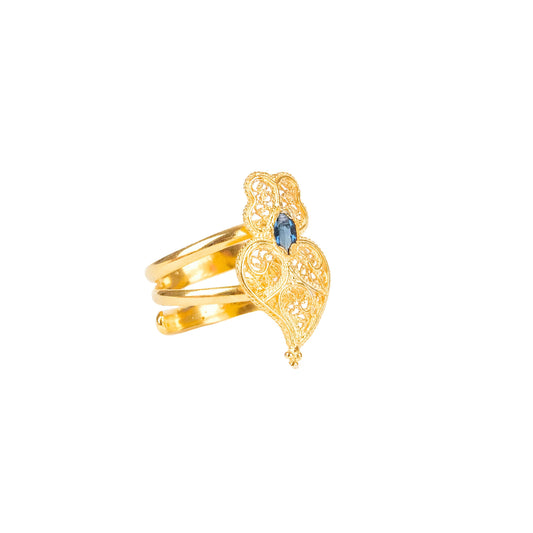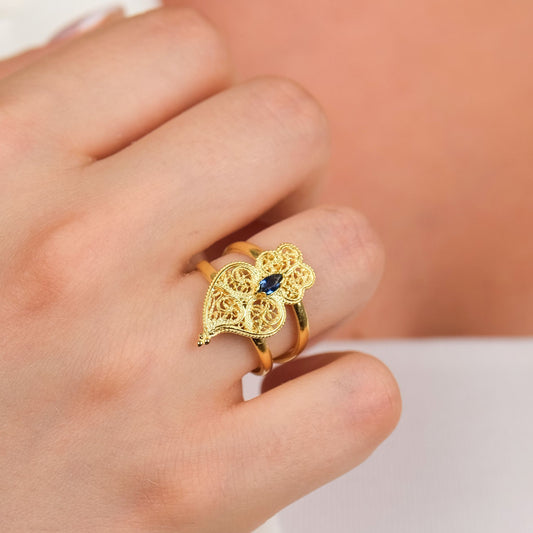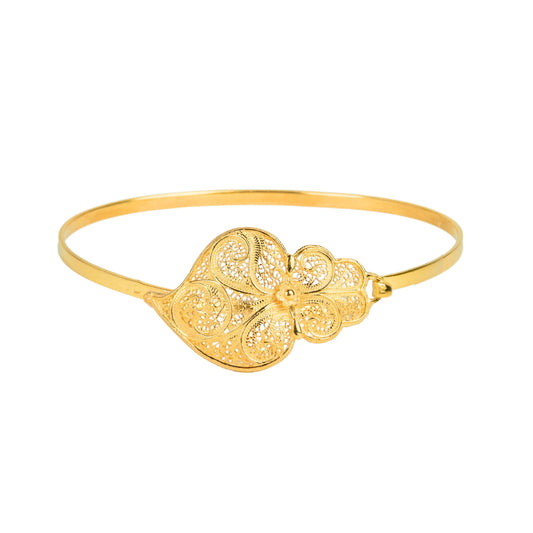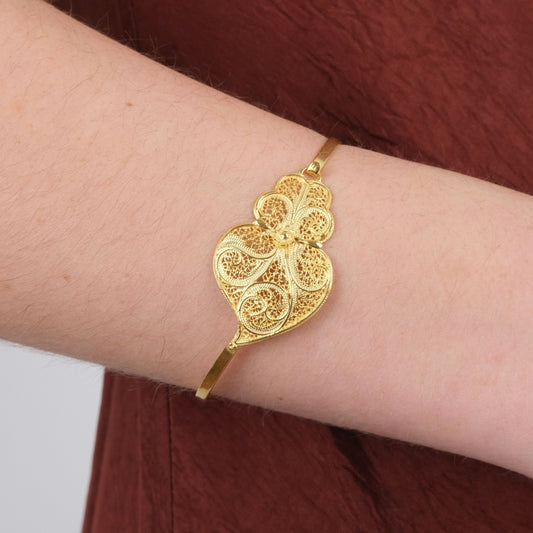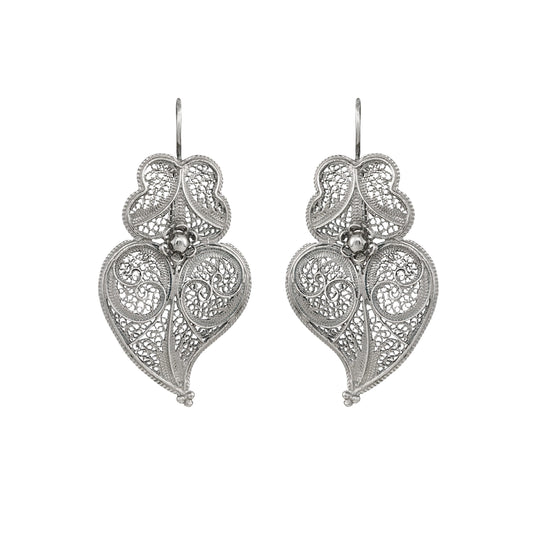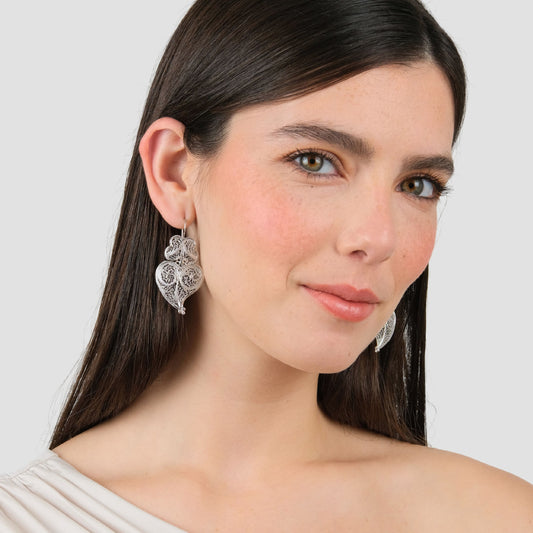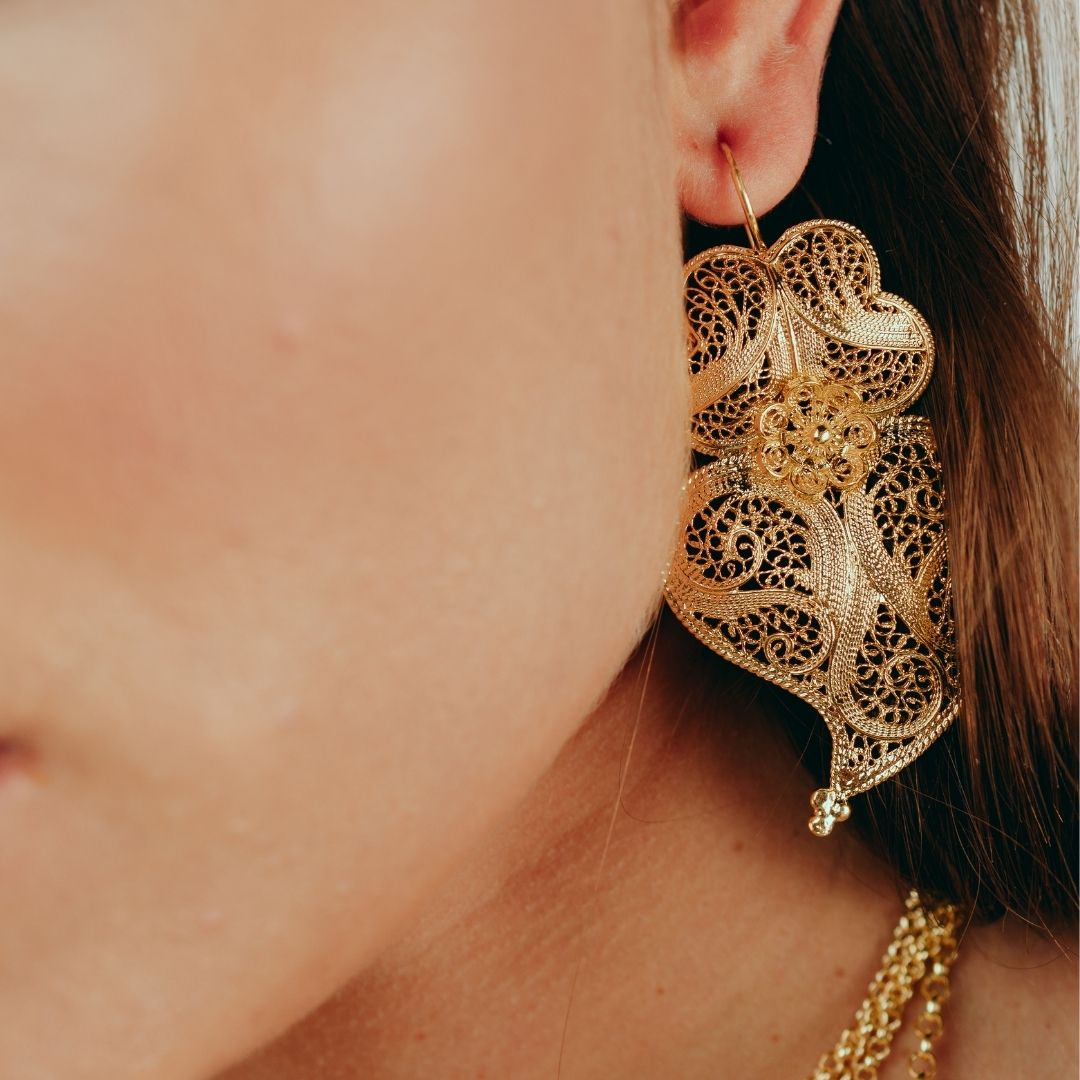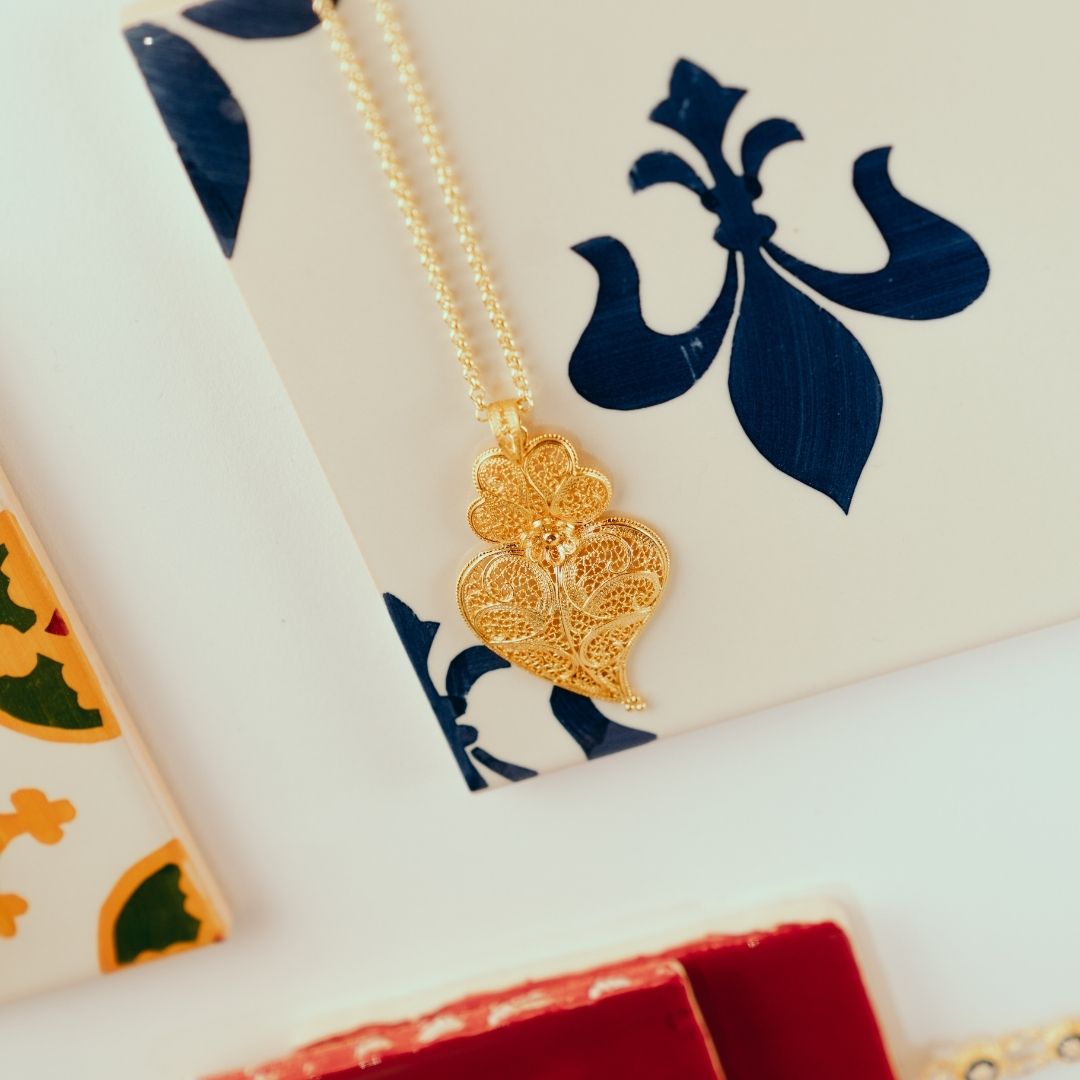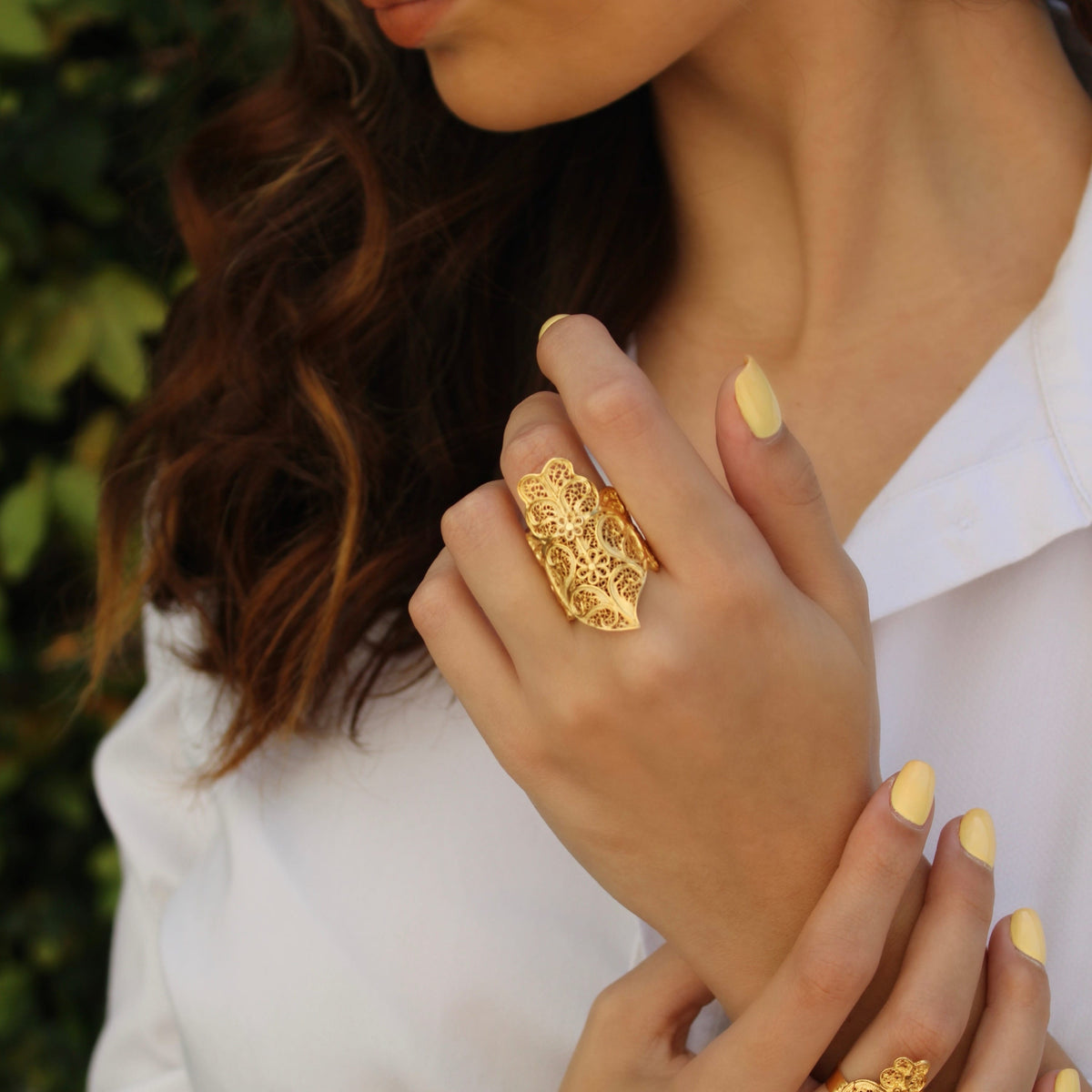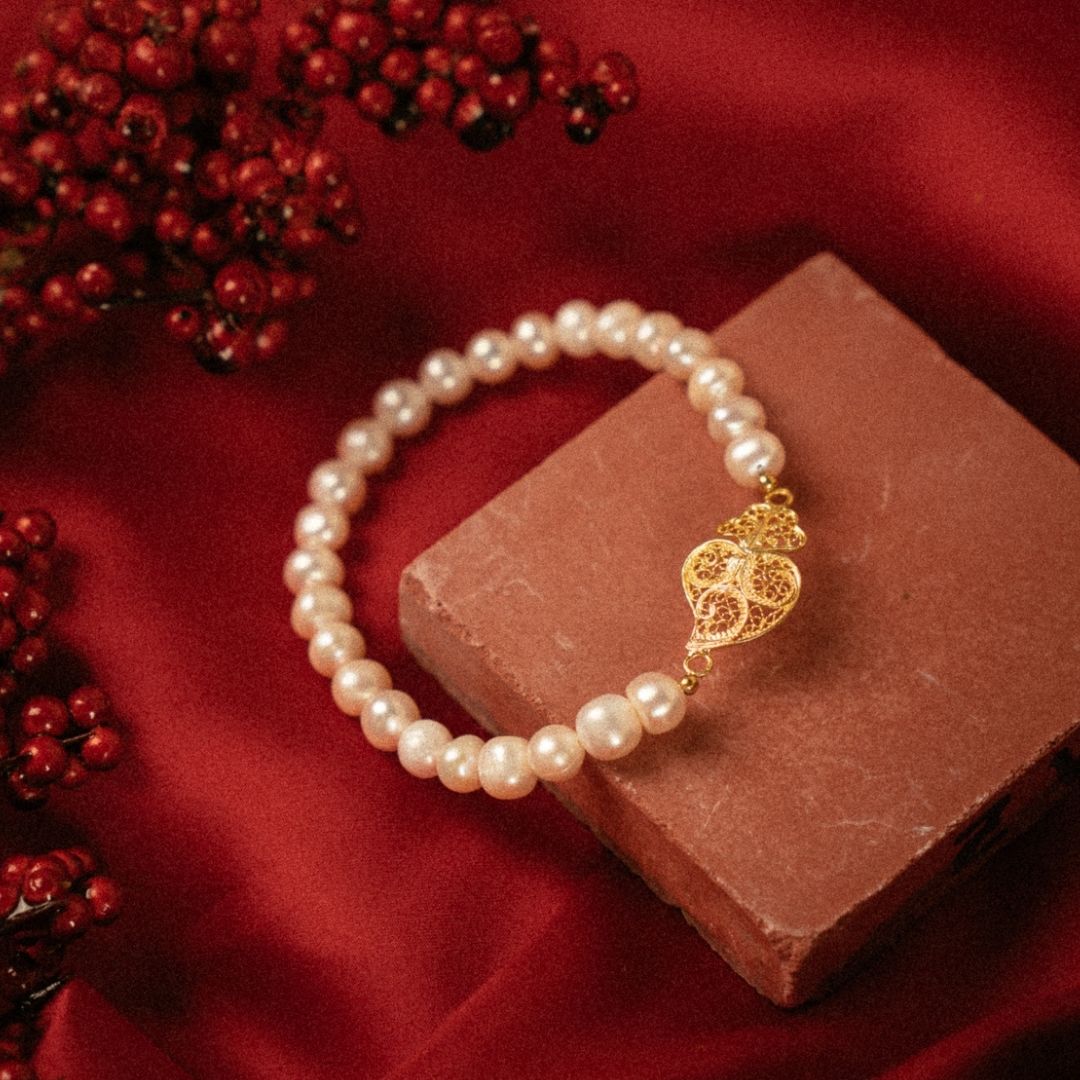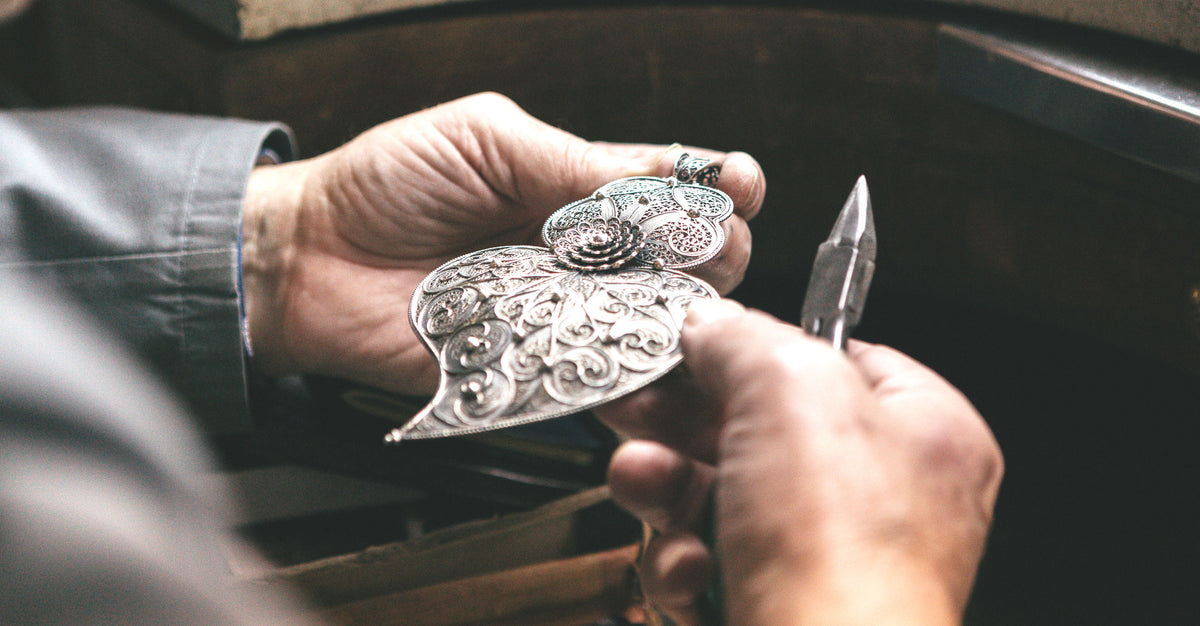

HEART OF VIANA
The Heart of Viana, which is currently used as a symbol of the city of Viana do Castelo, appeared in Portugal with the cult of the Sacred Heart of Jesus at the end of the 18th century. It has become an emotional and iconic heritage of Portugal and of Portuguese filigree art, and it is now recognized around the world.
Necklace Heart of Viana in Gold Plated Silver
Earrings Heart of Viana 2,5cm in Gold Plated Silver
Bracelet Heart of Viana in Gold Plated Silver with Pearls
Necklace Heart of Viana 2,5cm in Gold Plated Silver
Earrings Heart of Viana 3,5cm in Gold Plated Silver
Necklace Heart of Viana in Silver
Bracelet Heart of Viana in Gold Plated Silver with Cord
Necklace Heart of Viana 3,5cm in Gold Plated Silver
Earrings Heart of Viana 2,5cm in Silver
Ring Heart of Viana in Gold Plated Silver
Earrings Heart of Viana Azulejo in Gold Plated Silver
Ring Heart of Viana XL in Gold Plated Silver
Necklace Heart of Viana Green in Gold Plated Silver
Earrings Heart of Viana Green in Gold Plated Silver
Necklace Heart of Viana Azulejo in Gold Plated Silver
Earrings Heart of Viana Blue in Gold Plated Silver
Necklace Heart of Viana 4,0 cm in Gold Plated Silver
Necklace Heart of Viana Blue in Gold Plated Silver
Earrings Heart of Viana 4,0cm in Gold Plated Silver
Earrings Heart of Viana XS in Gold Plated Silver
Earrings Heart of Viana 3,5cm in Silver
Necklace Heart of Viana 2,5cm in Silver
Bracelet Heart of Viana in Silver with Cord
Necklace Heart of Viana 4,5 cm in Gold Plated Silver
Necklace Heart of Viana 5,5cm in Gold Plated Silver
Necklace Heart of Viana Red in Gold Plated Silver
Bracelet Heart of Viana in Gold Plated Silver
Bracelet Heart of Viana in Silver with Pearls
Necklace Heart of Viana with Fatima in Gold Plated Silver
Earrings Heart of Viana Red in Gold Plated Silver
Earrings Heart of Viana XXS in 9Kt Gold
Necklace Heart of Viana 3,5cm in Silver
Earrings Heart of Viana Azulejo in Silver
Earrings Heart of Viana 4,5cm in Gold Plated Silver
Bracelet Five Hearts of Viana in Gold Plated Silver
Necklace Heart of Viana 3,5cm in Gold Plated Silver with Pearl
Necklace Heart of Viana Azulejo in Silver
Earrings Heart of Viana 4,0cm in Silver
Earrings Heart of Viana 3,5cm in Gold Plated Silver with Pearl
Bracelet Heart of Viana in Silver
Bracelet Heart of Viana XL in Gold Plated Silver
Necklace Heart of Viana 4,0 cm in Silver
Necklace Heart of Viana XS in 19,2Kt Gold
Necklace Heart of Viana XXS in 19,2Kt Gold
Earrings Heart of Viana XXS in 19,2Kt Gold
Ring Heart of Viana Blue in Gold Plated Silver
Bracelet Bangle Heart of Viana in Gold Plated Silver
Earrings Heart of Viana 4,5cm in Silver
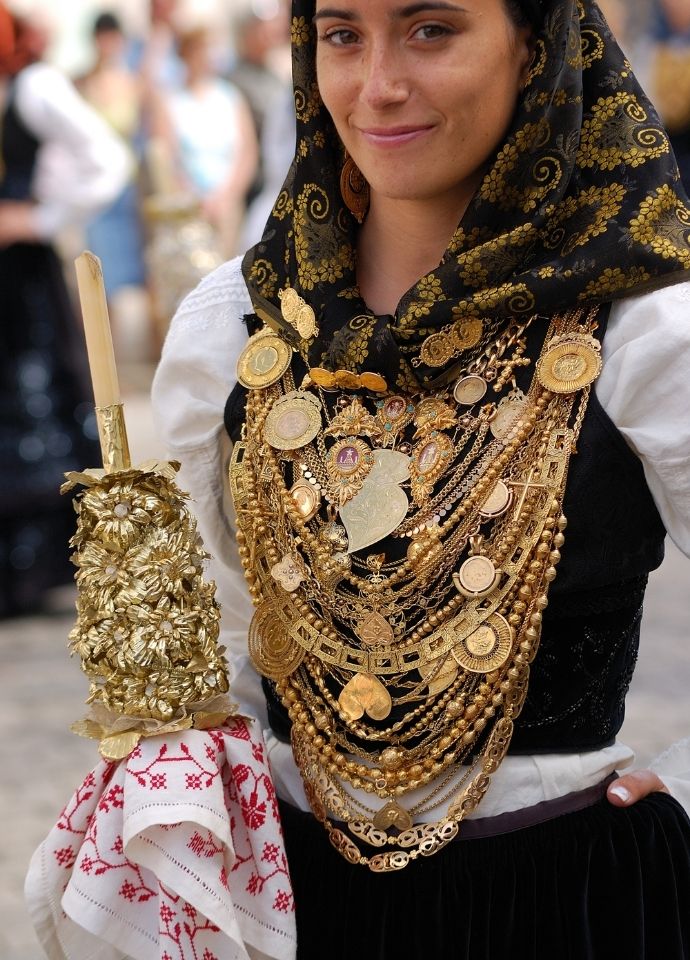
HISTORY OF THE HEART OF VIANA
According to some authors, Queen Maria I was one of the first to encourage the use of this symbol, but its use became more popular throughout the 19th century by the wealthy ladies of the bourgeois families of Viana do Castelo.
However, its name can mislead us! The Heart of Viana was and has been produced outside Viana do Castelo, mainly in the village of Póvoa do Lanhoso and in the city of Gondomar, where many of the goldsmith workshops are concentrated.
The city of Viana thus lends its name to the piece, which has become, over the years, an almost indispensable element in the Pilgrimages of Our Lady of Agony, in necklaces on the chest of those who participate in them.
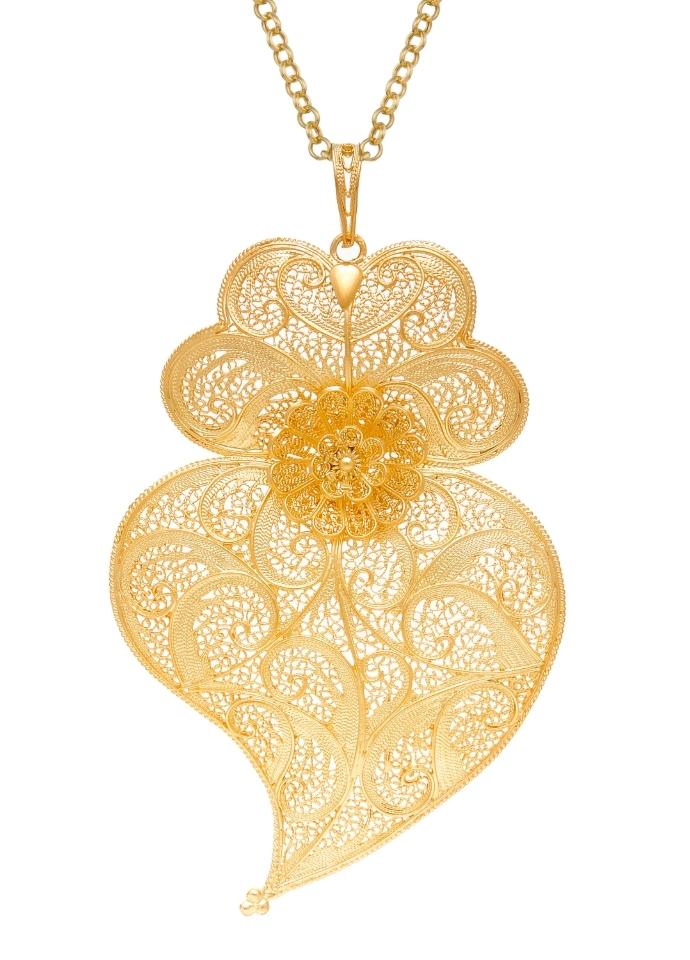
HEARTS OF VIANA IN FILIGREE: THE MEANING
Originally conceived as a religious representation of God's universal love, it was hence initially hung around the neck, close to the heart.
But with time, this religious imagery moved into the profane realm, also starting to signify the love between two beings, and adapted to other types of adornment such as earrings, rings, etc.
The first representations were not the ones we are used to seeing in jewelry stores today, in delicate filigree, but in beaten gold plate, more or less worked and decorated. It was only later that they began to be created in the finest art of Portuguese jewelry - filigree.
THE ART OF DETAILS
The most classical form of the Heart of Viana is composed of four parts:
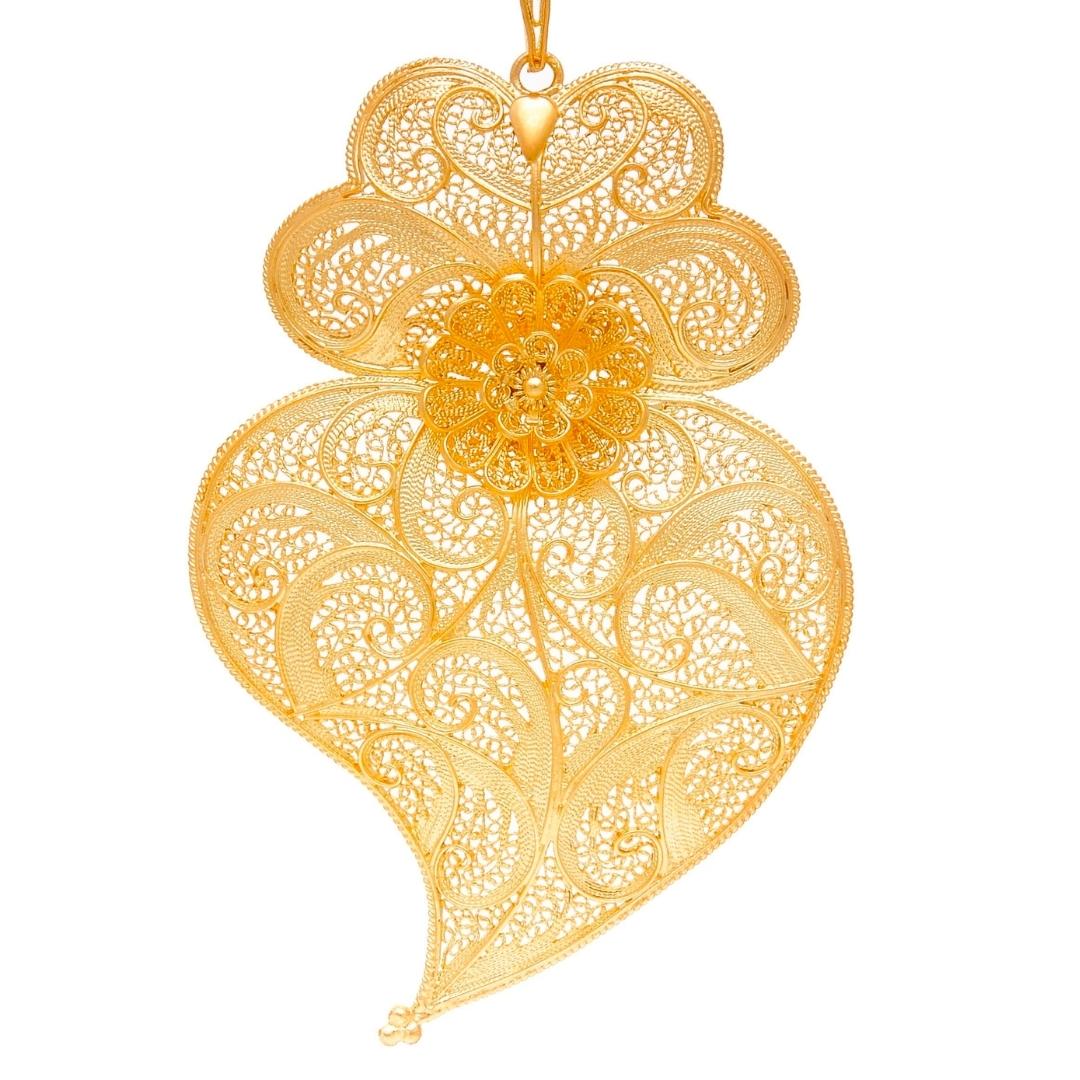
The largest and most important, which gives it its name is the heart itself, with its end in a curved beak, pointing to one side.
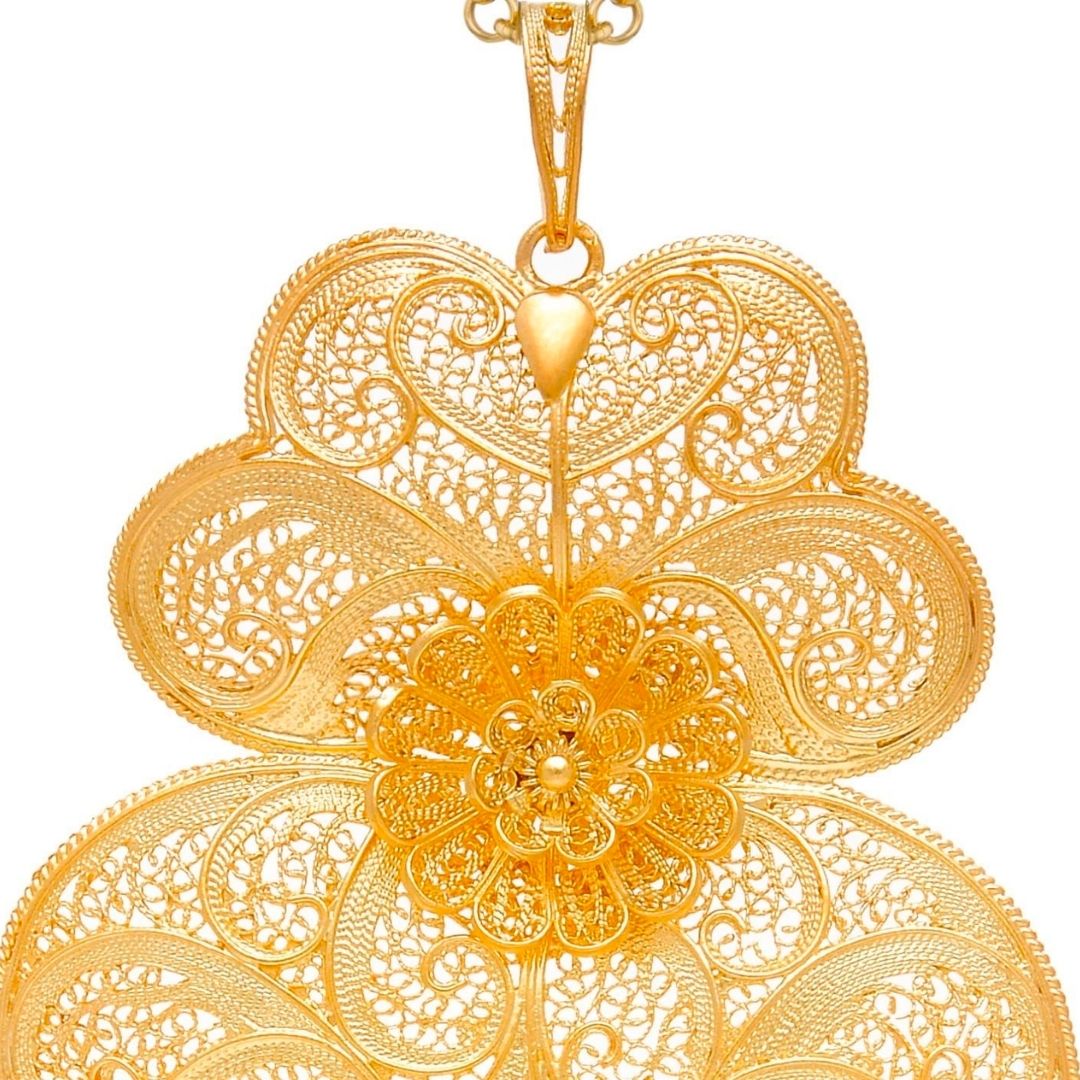
At its top the flames, in the shape of cornucopias, usually four.
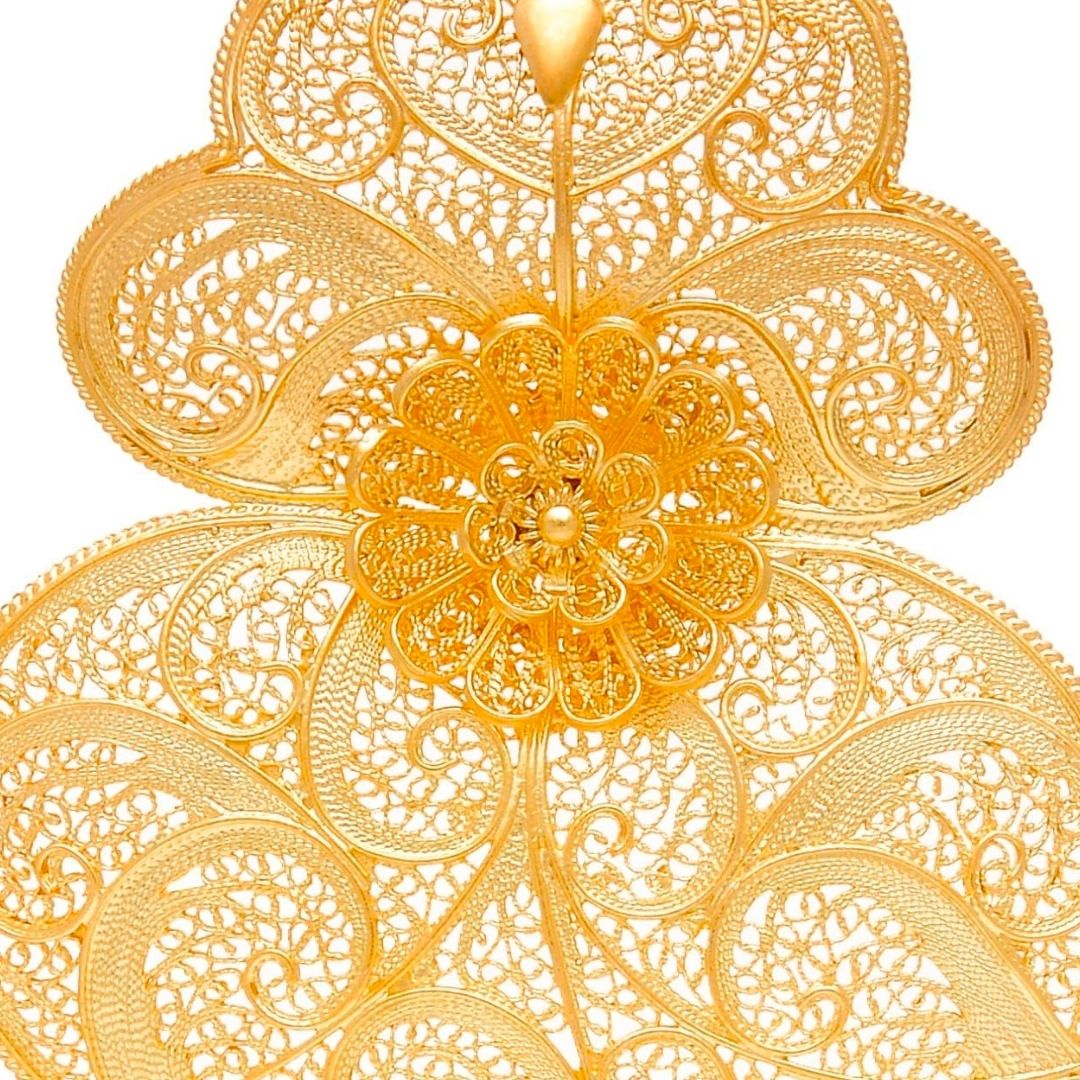
The junction between the two previous parts, which is only the welding of the said parts, disguised by a flower subtly worked, and in some cases, it can be the place for the application of stones.
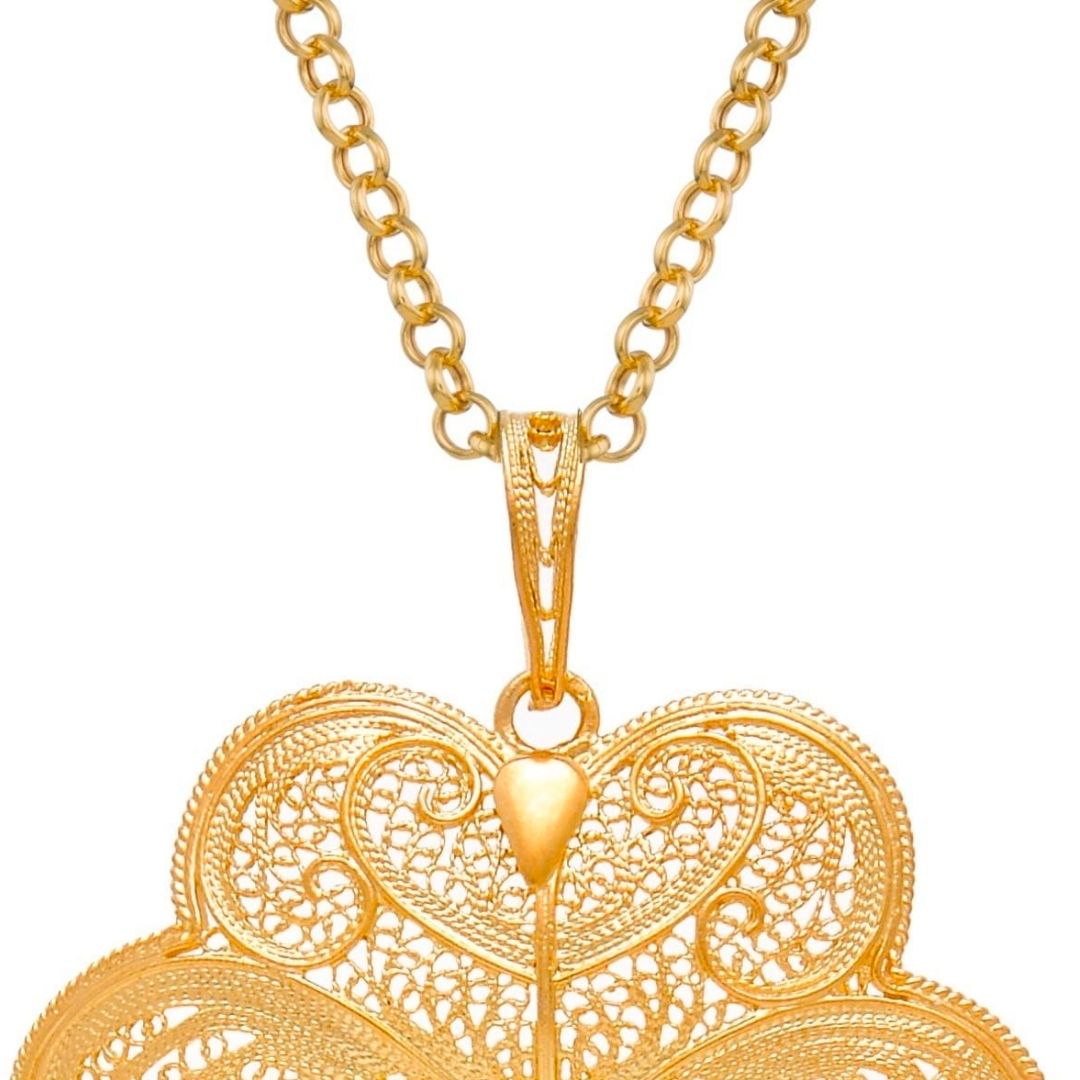
Finally, the ring so that it can hang on a chain or loop.
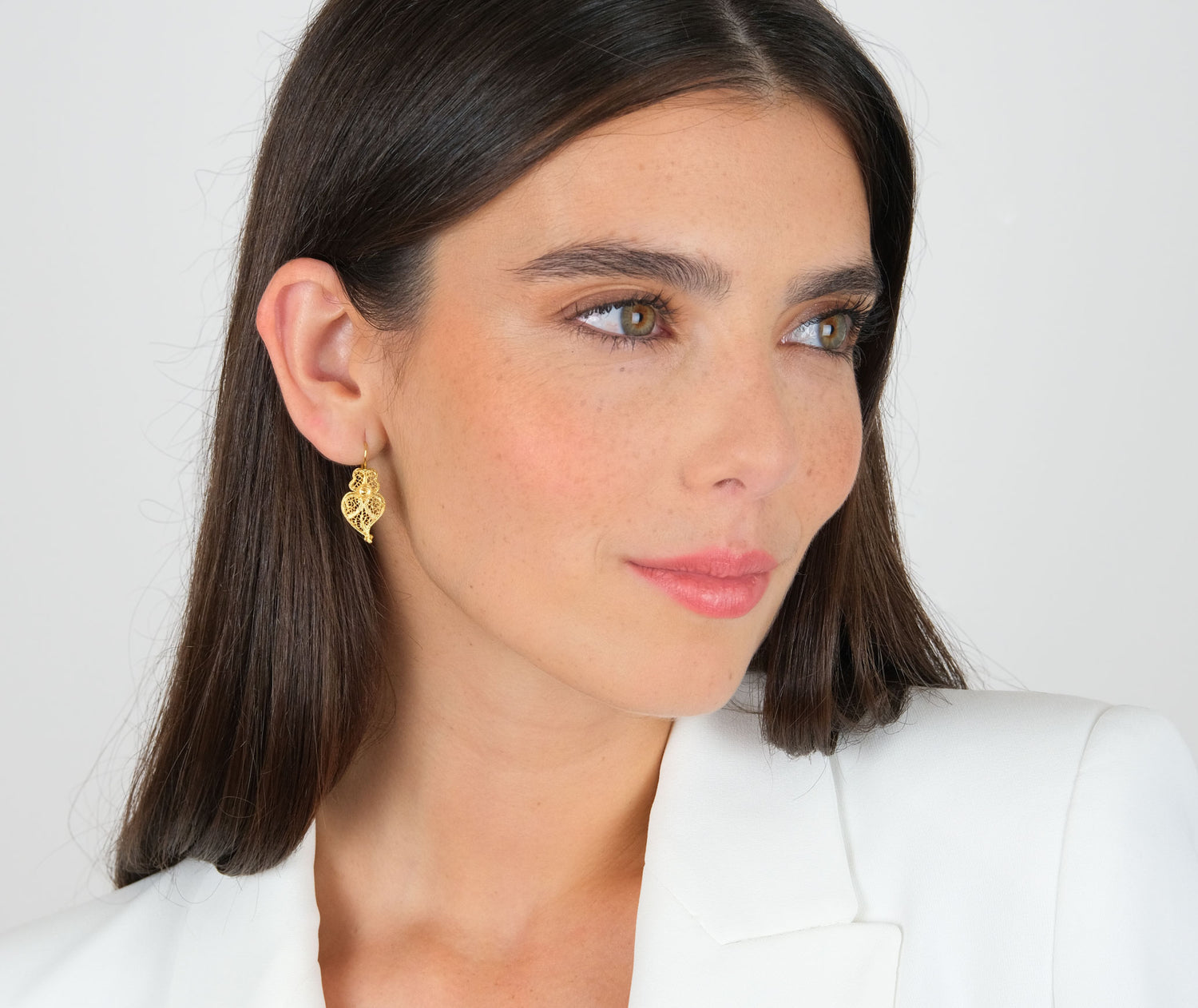
HEART OF VIANA 19.2KT GOLD
The Portuguese Gold Collection, made in 19.2Kt gold, is a selection of traditional Portuguese jewelry. Portuguese gold is among the purest in the world and is certified by the Portuguese Mint Office.
Discover our 19.2kt Gold Heart of Viana jewels.

